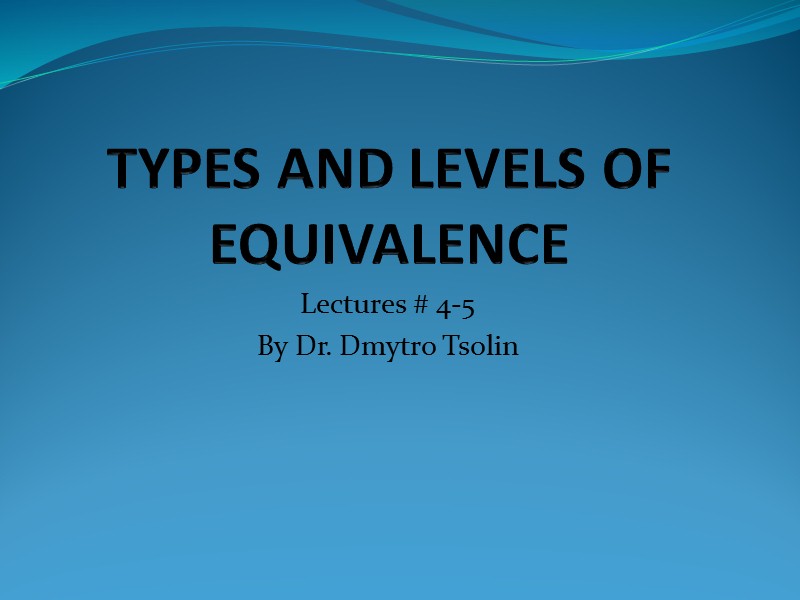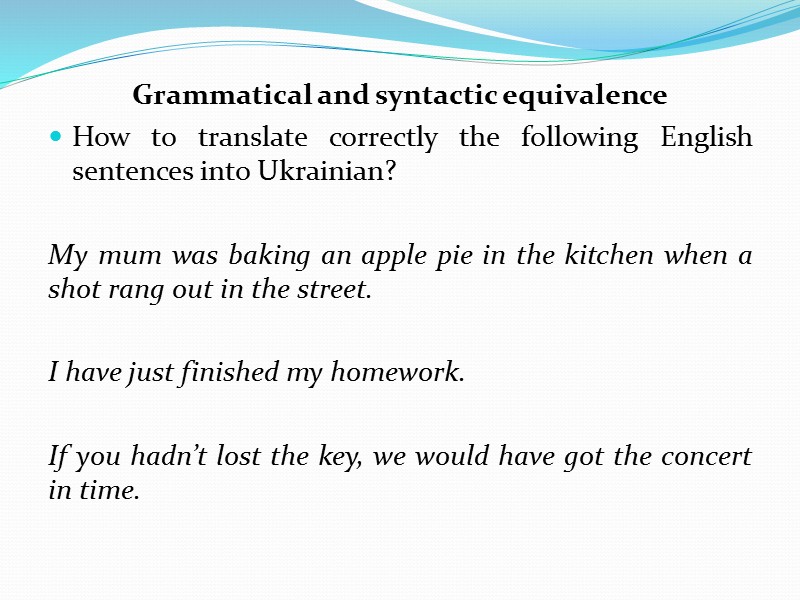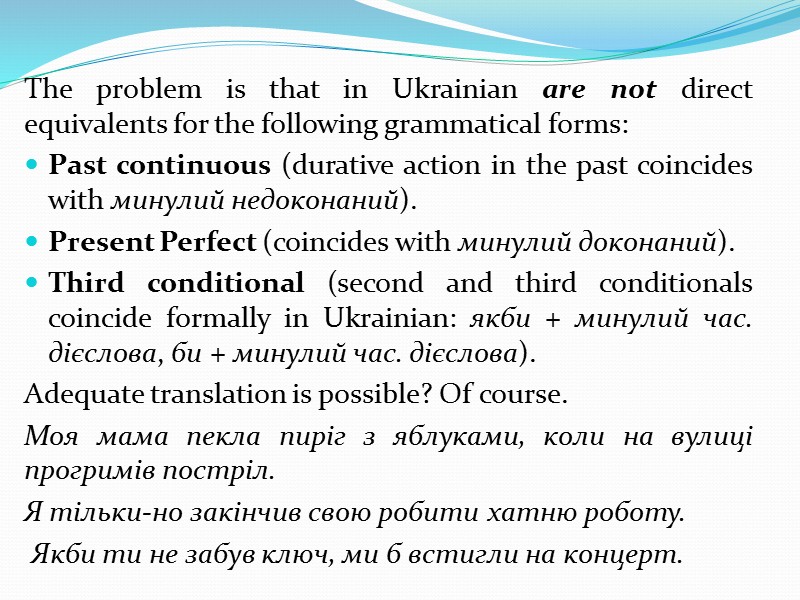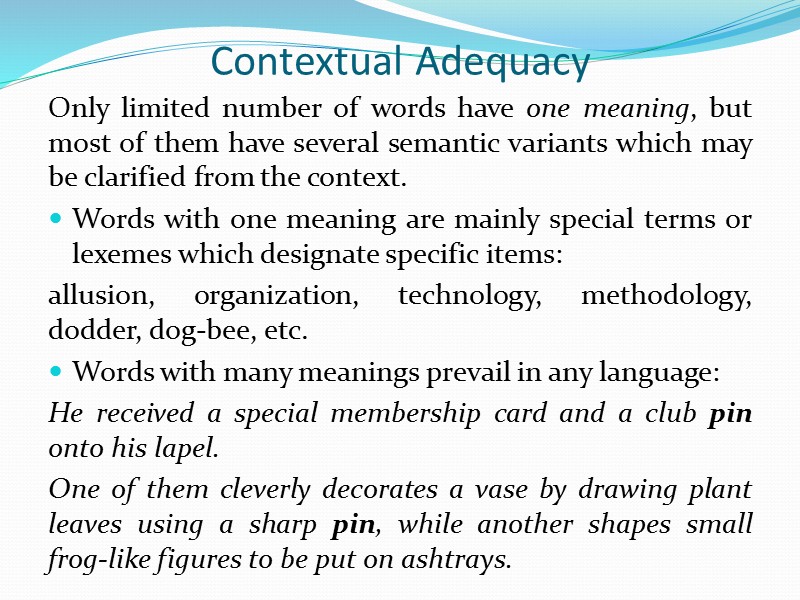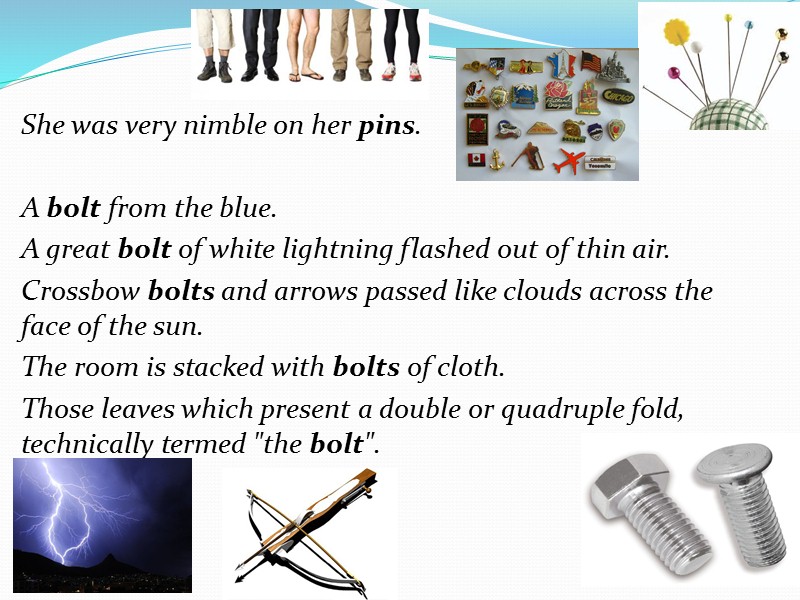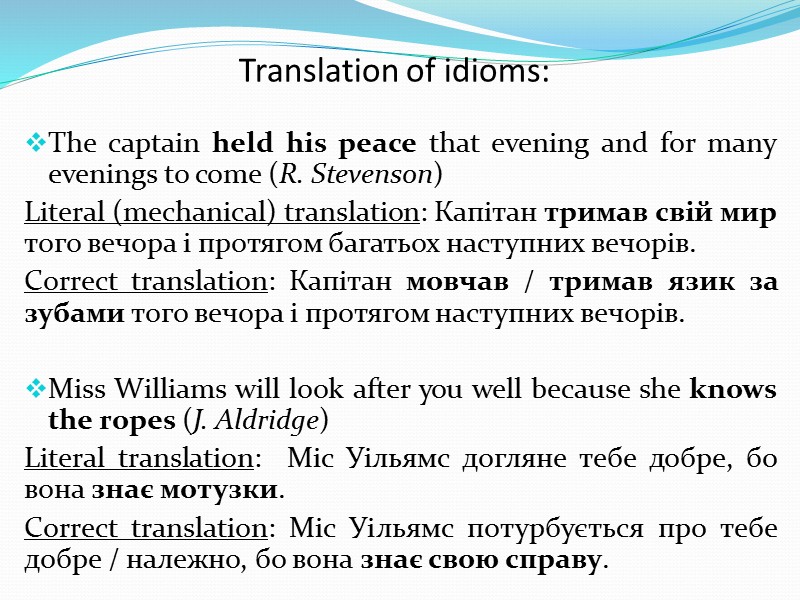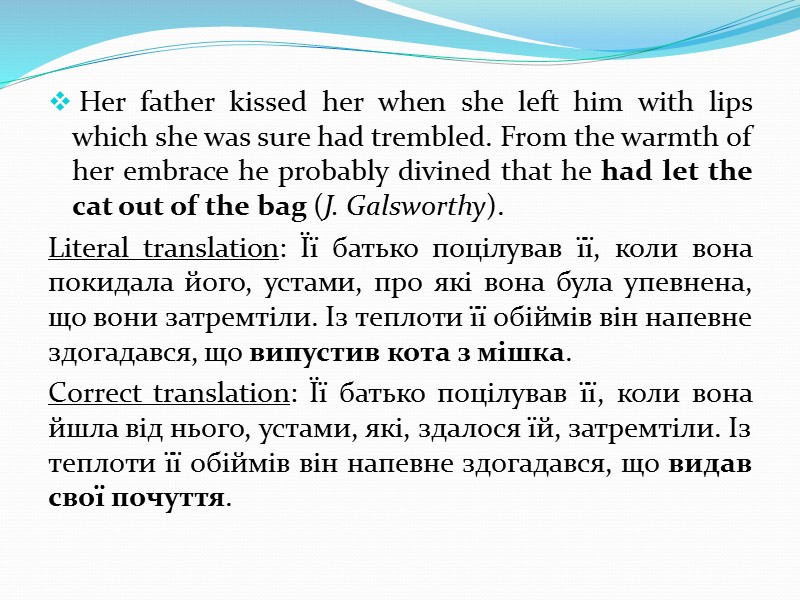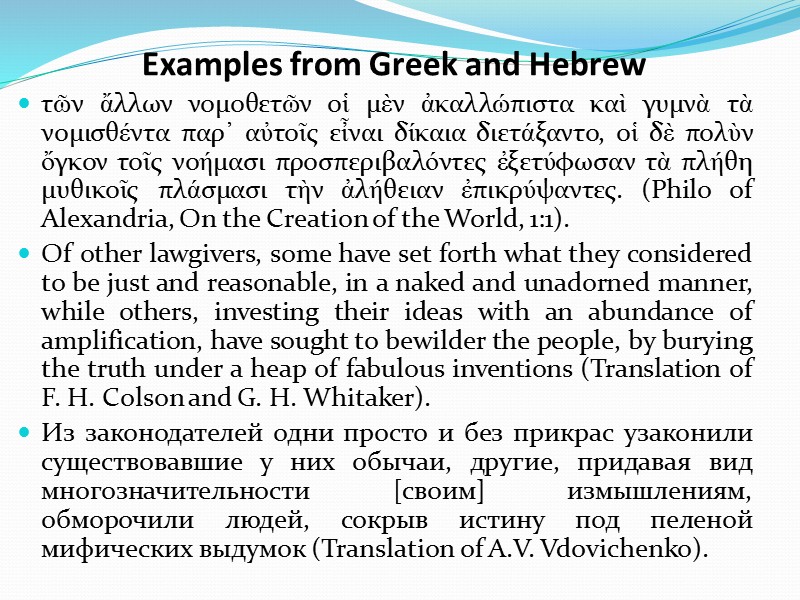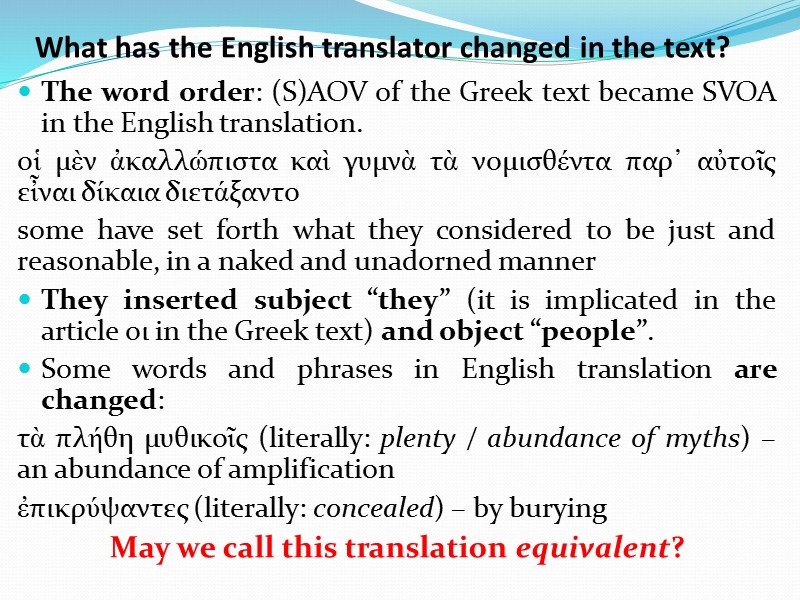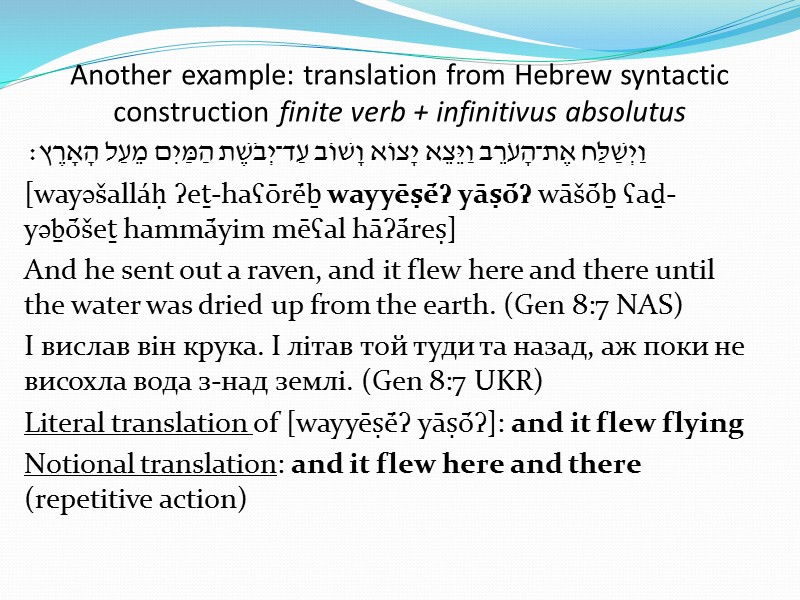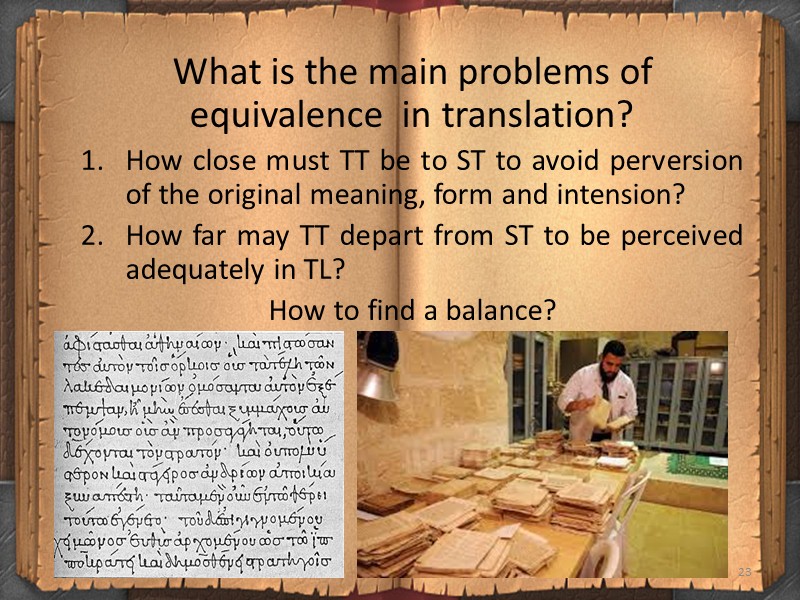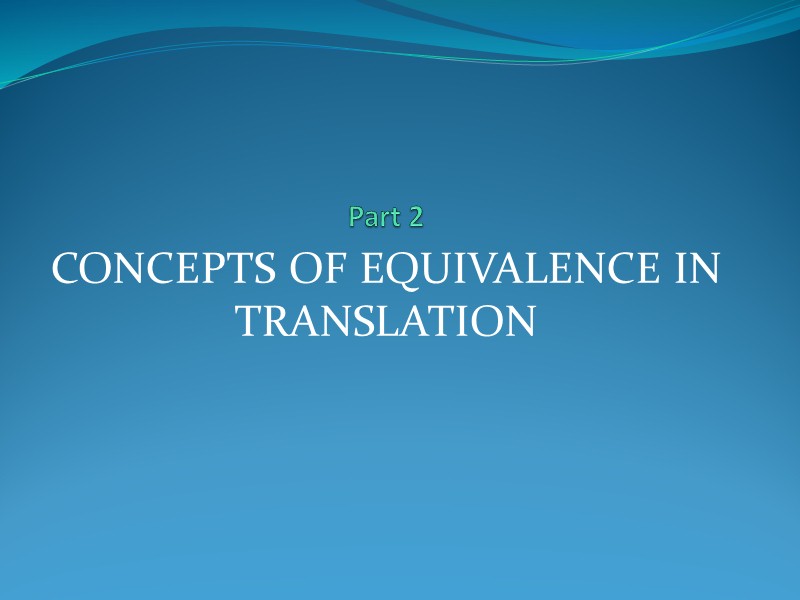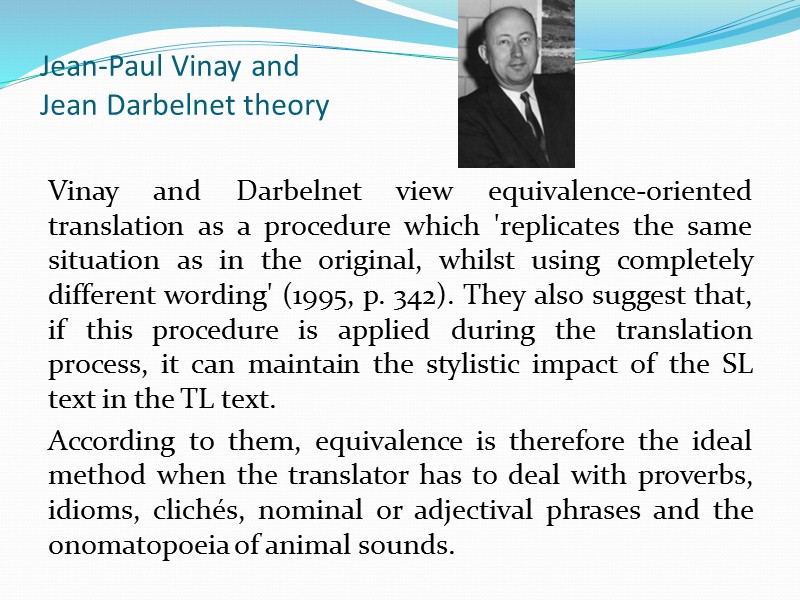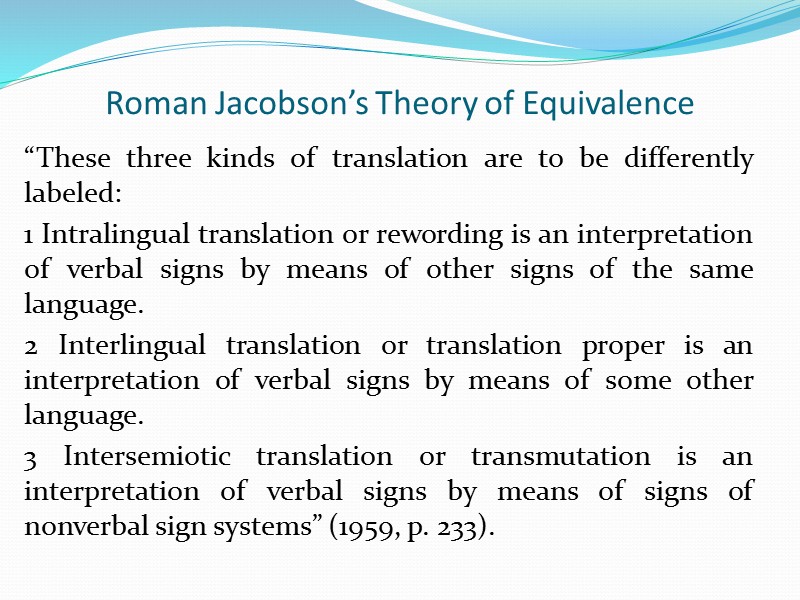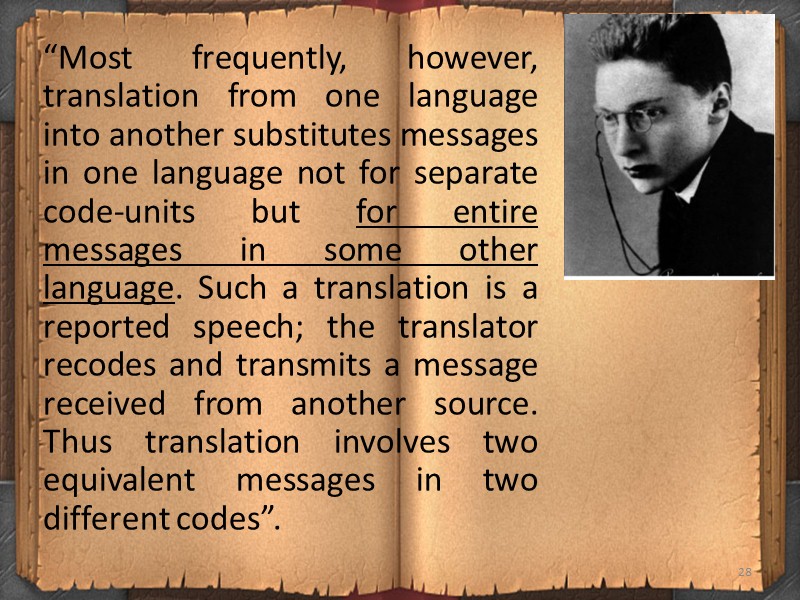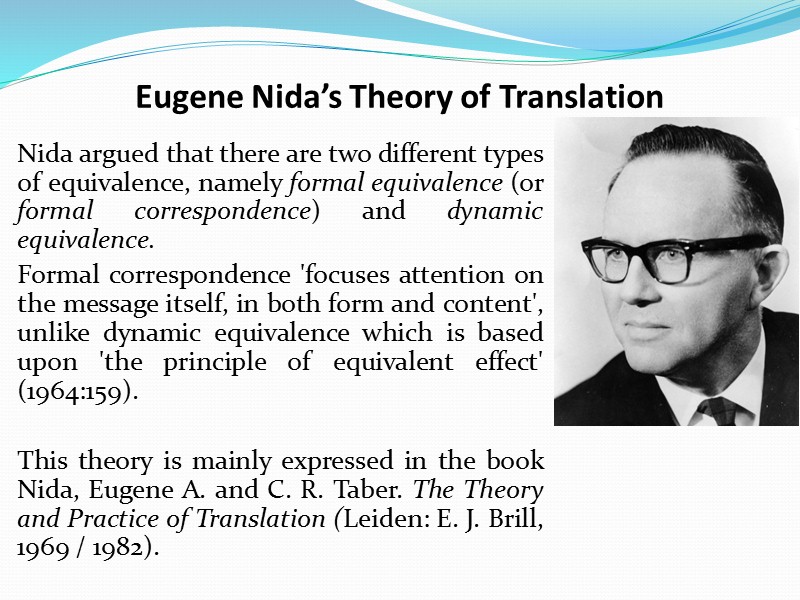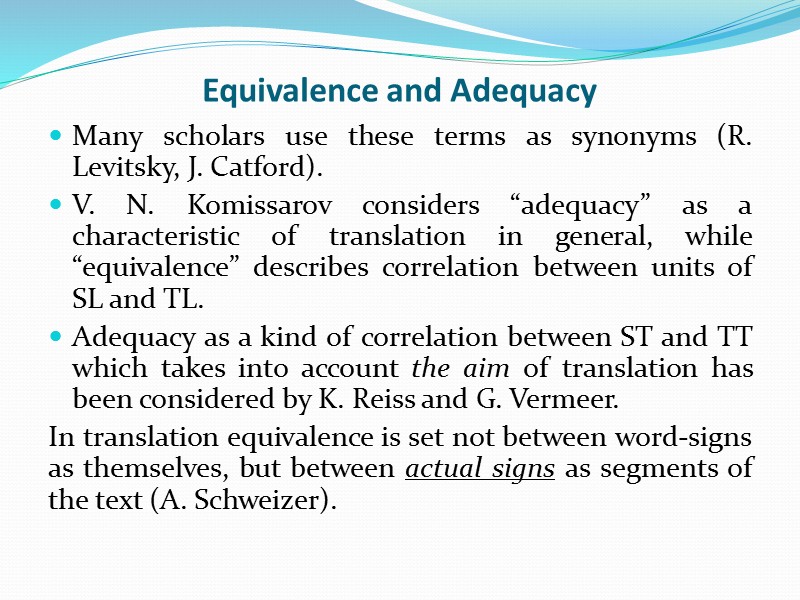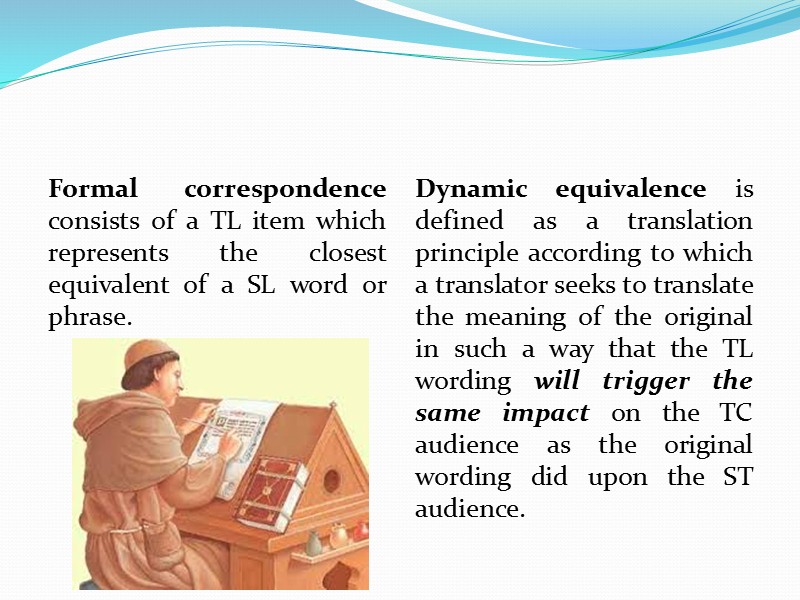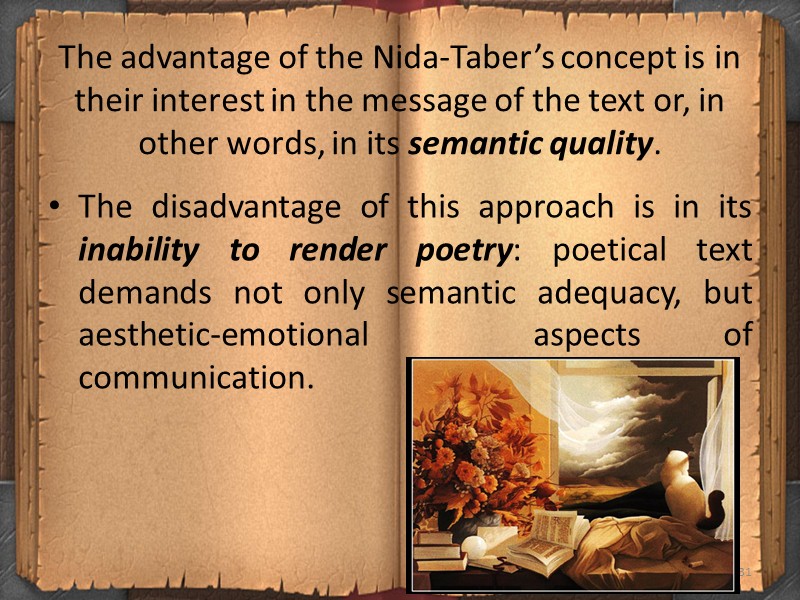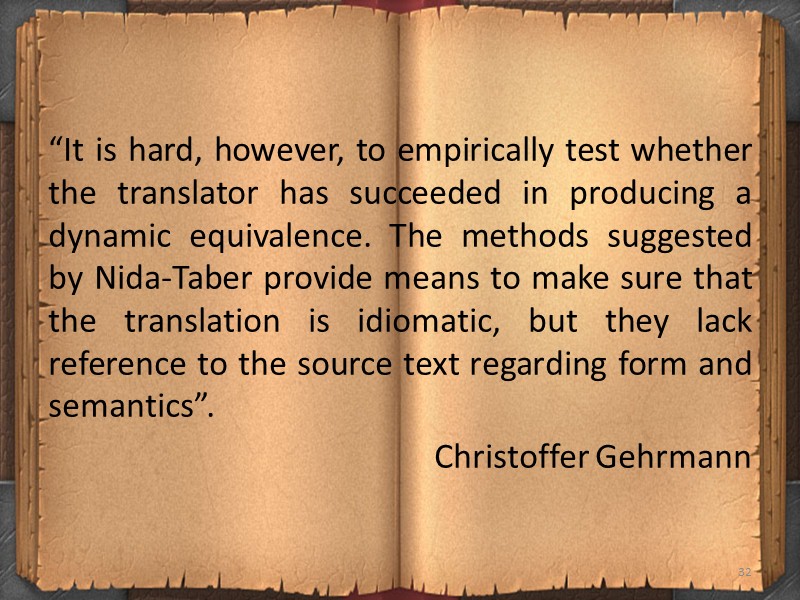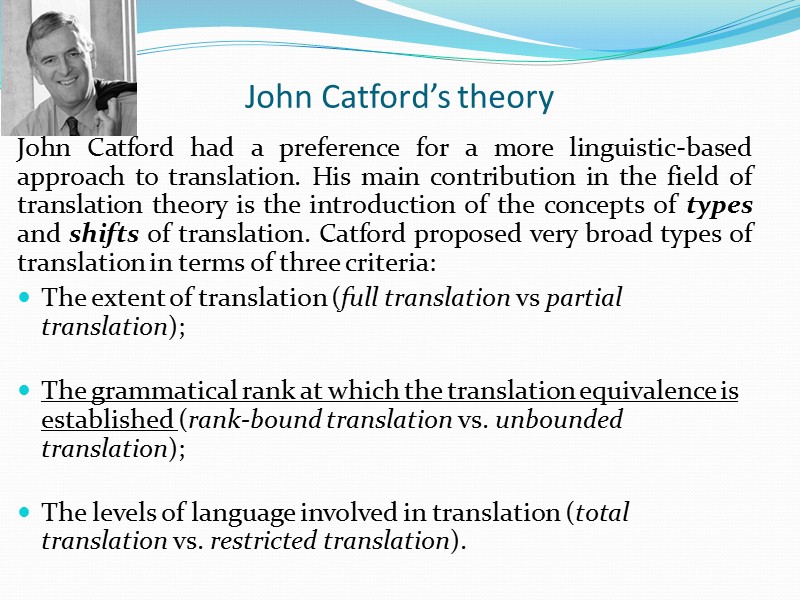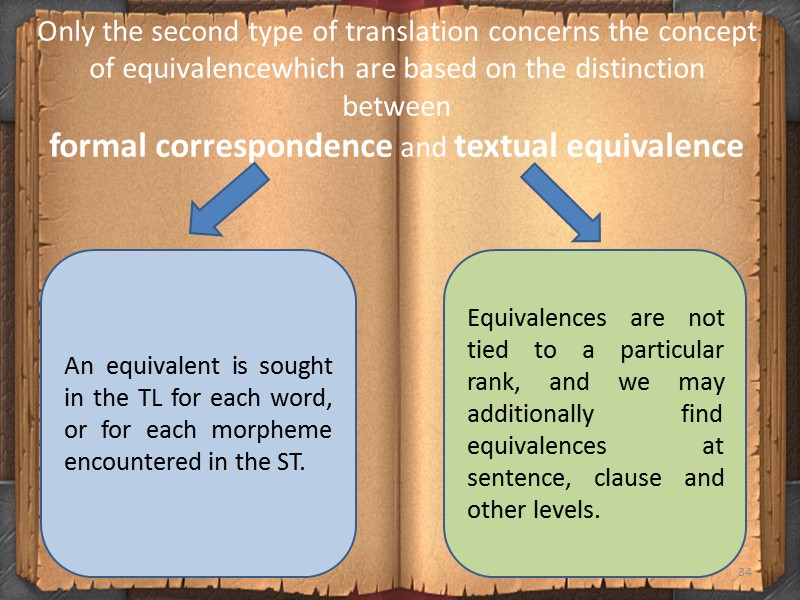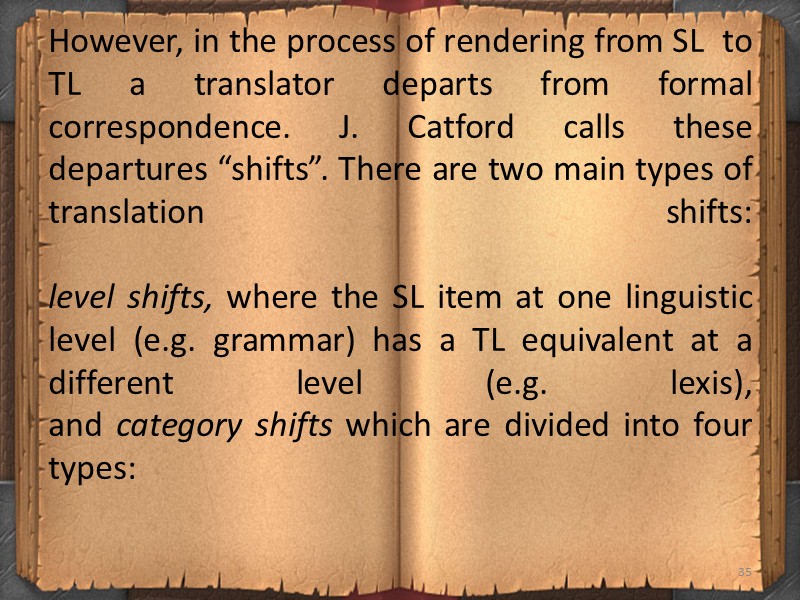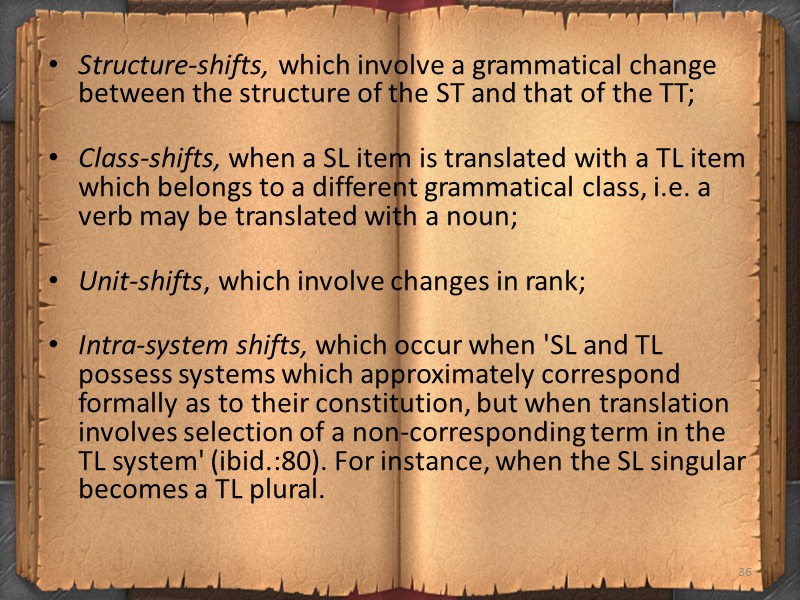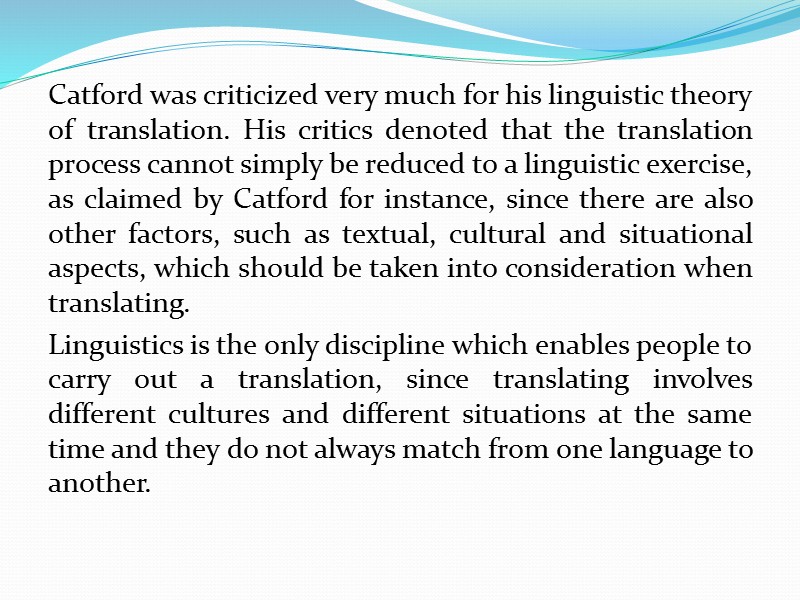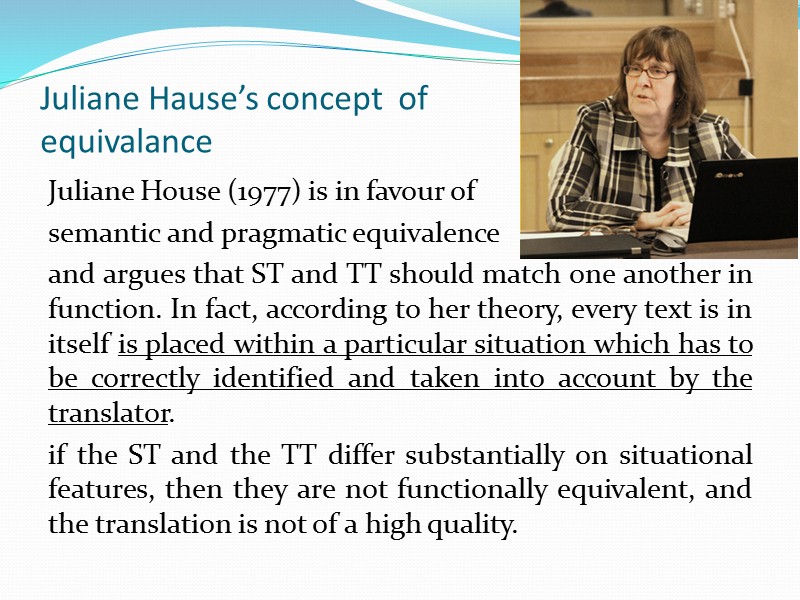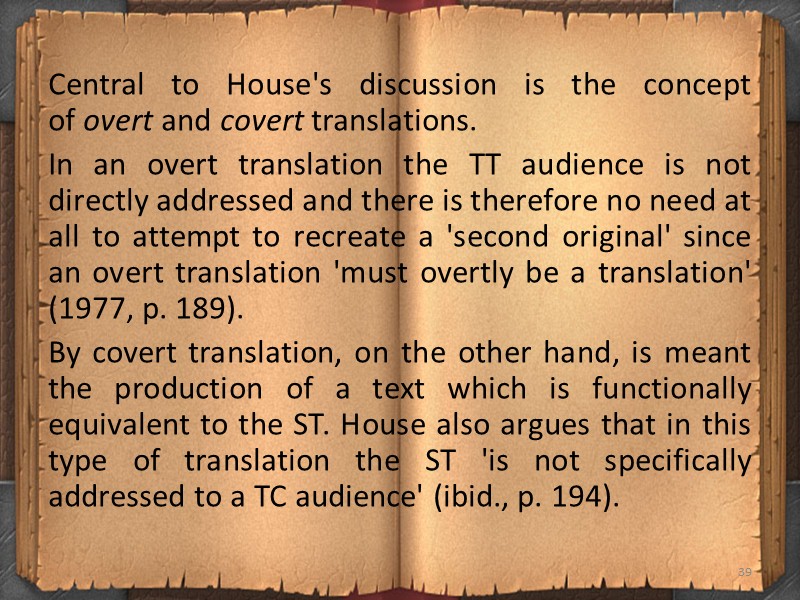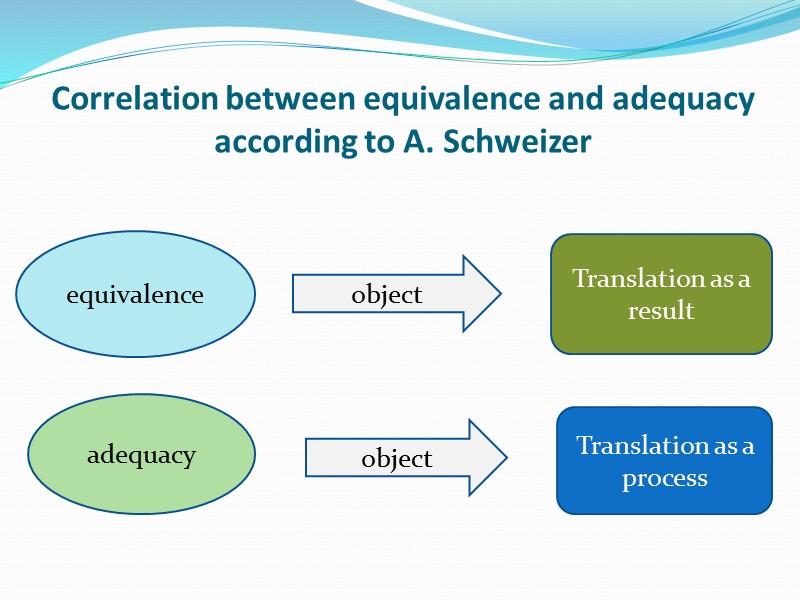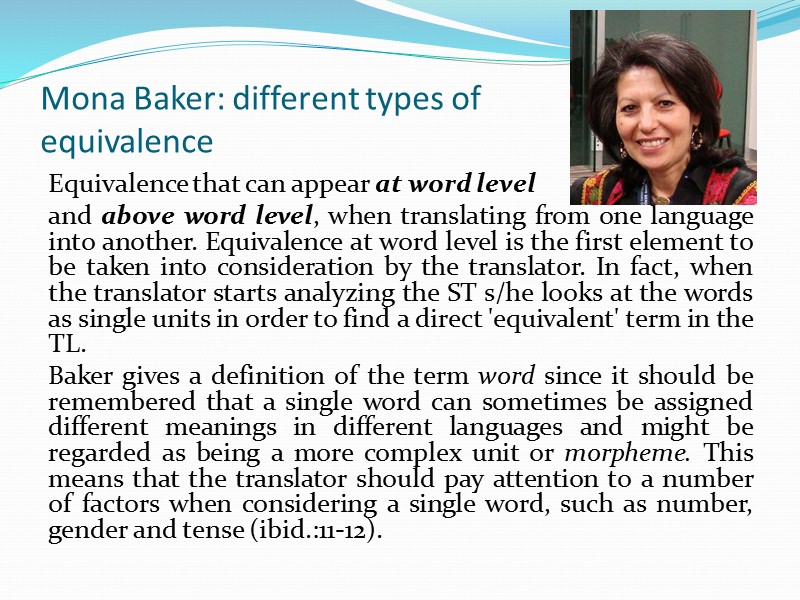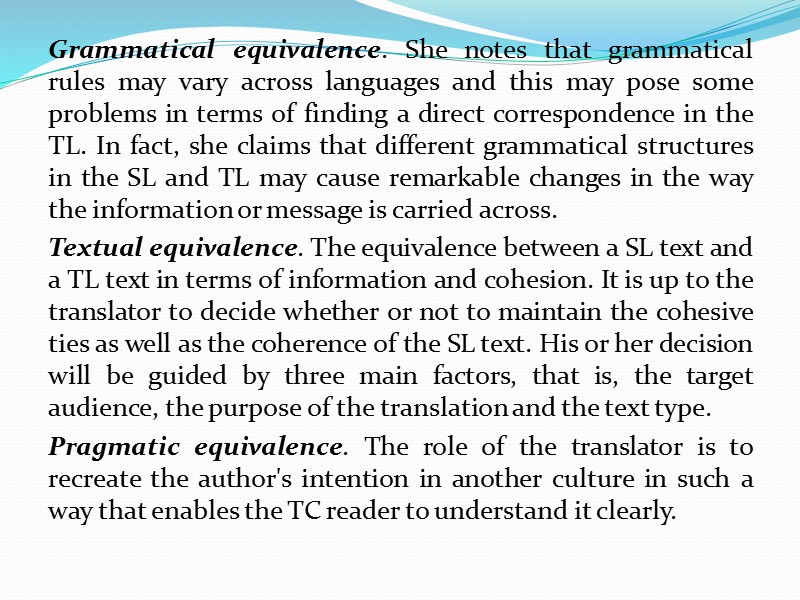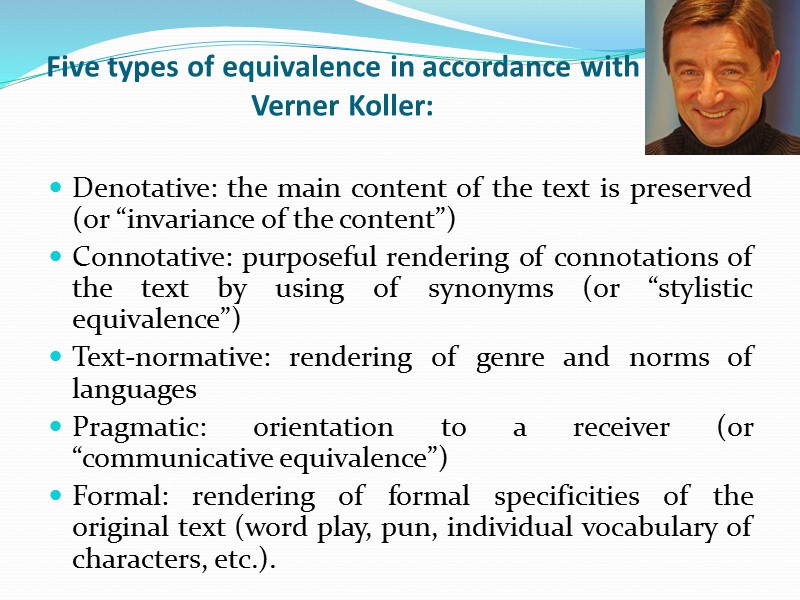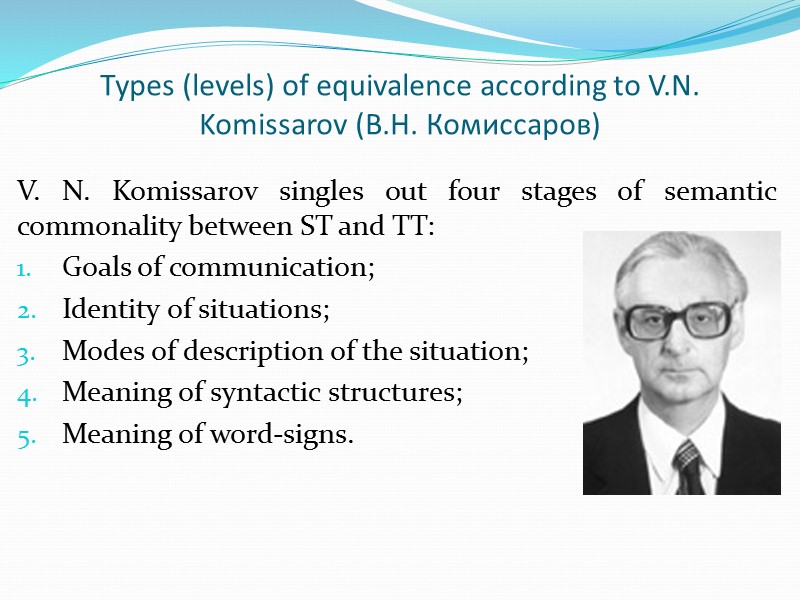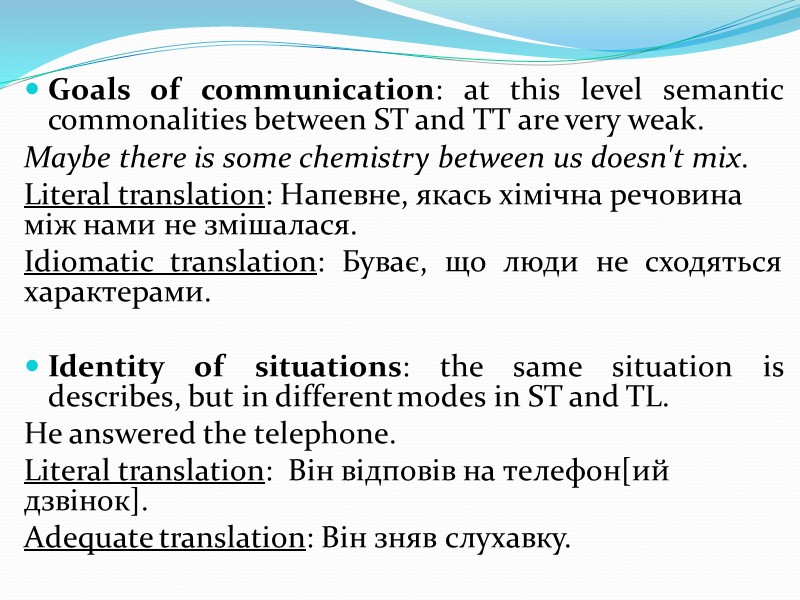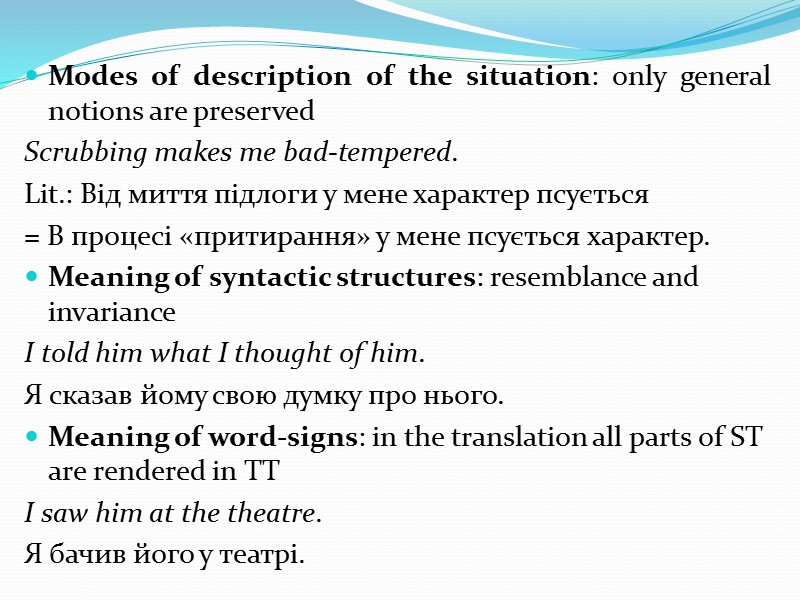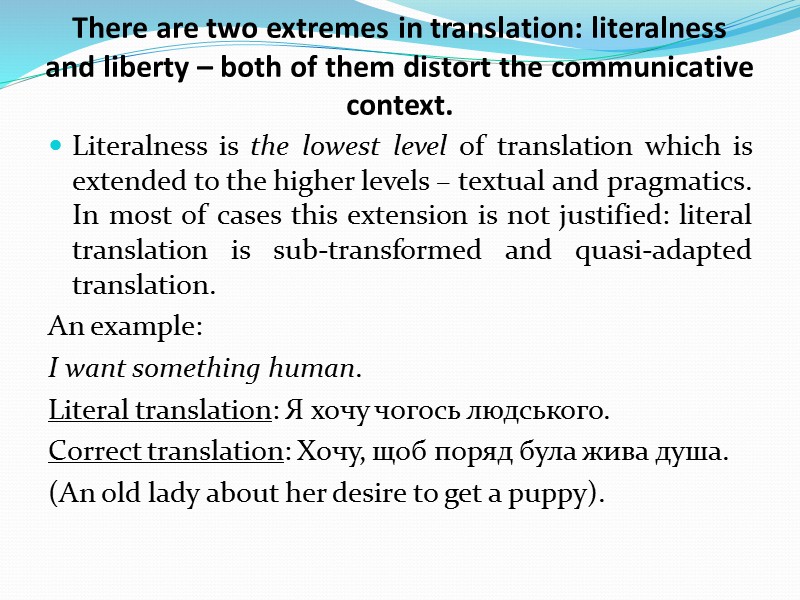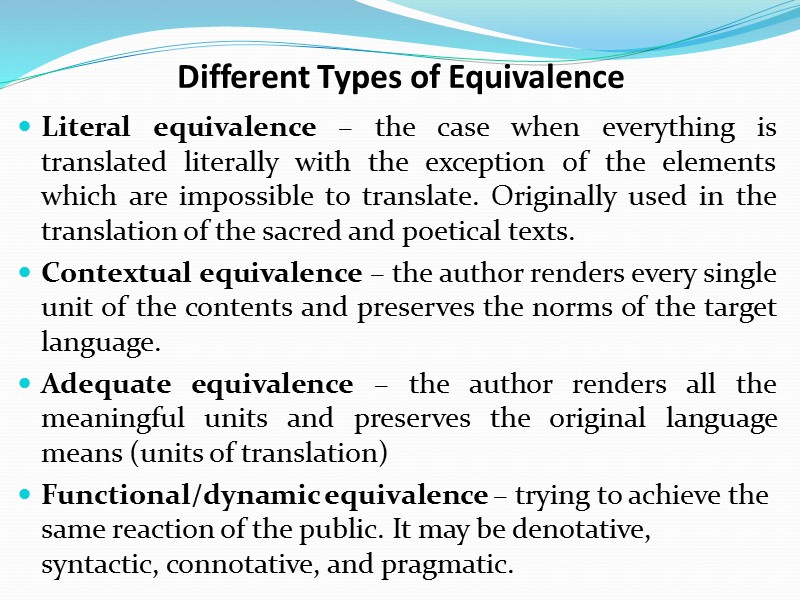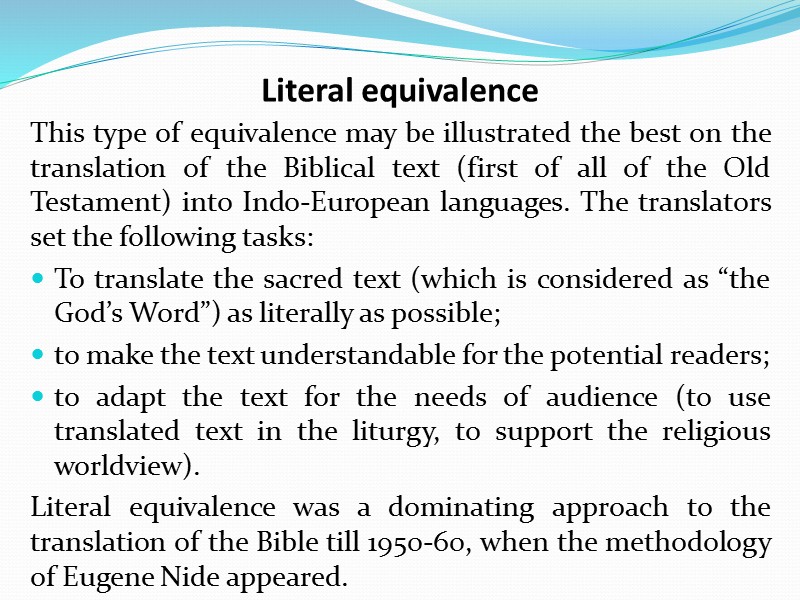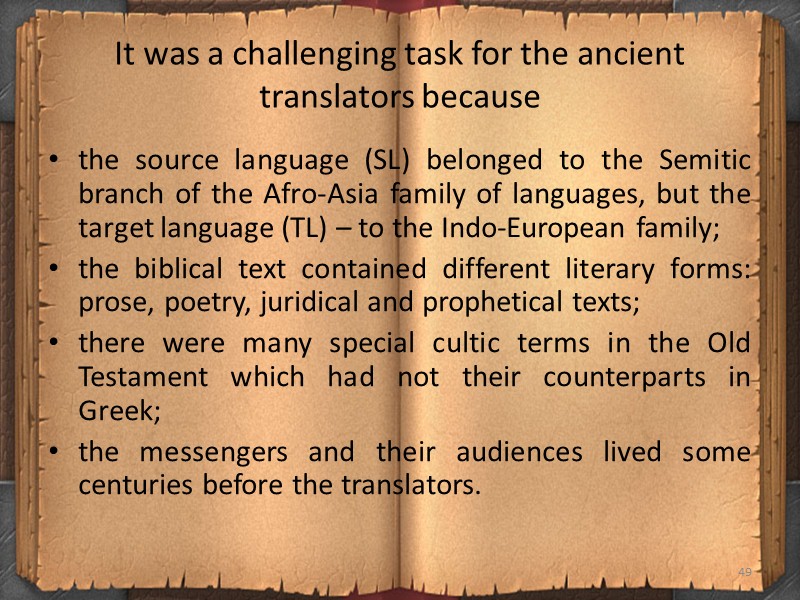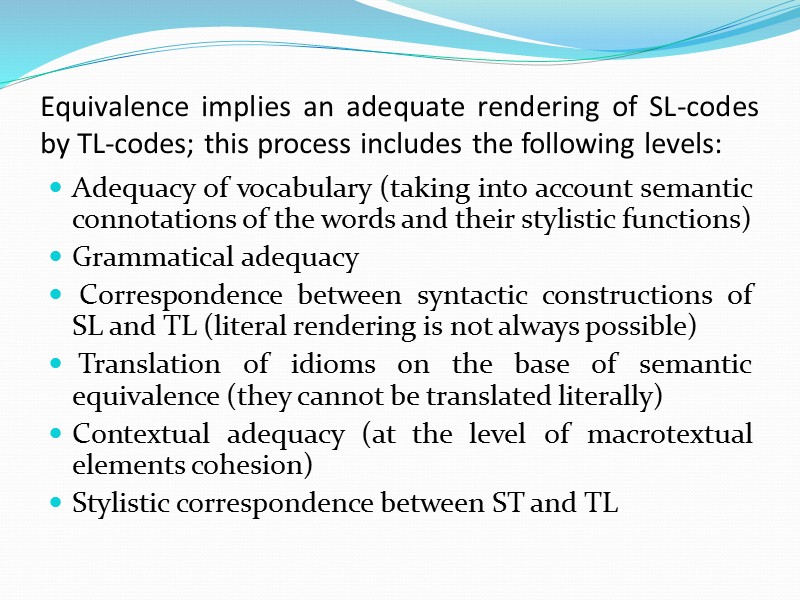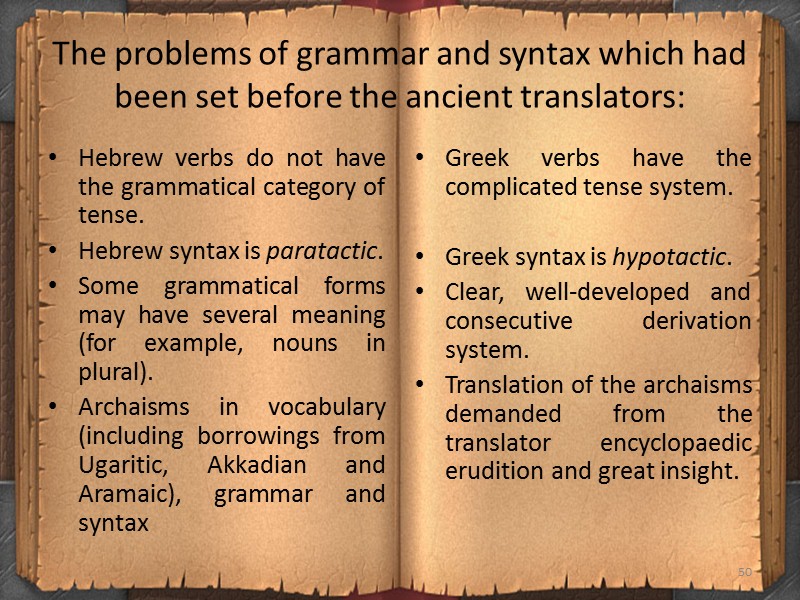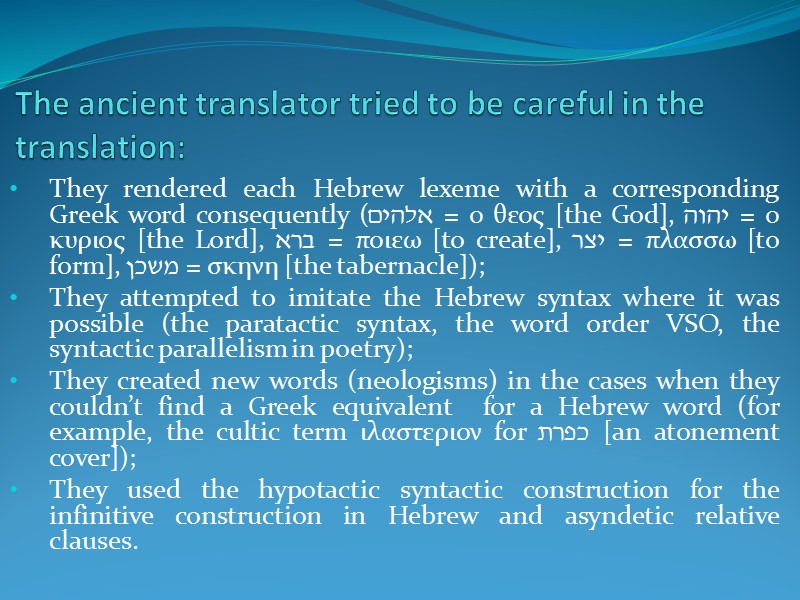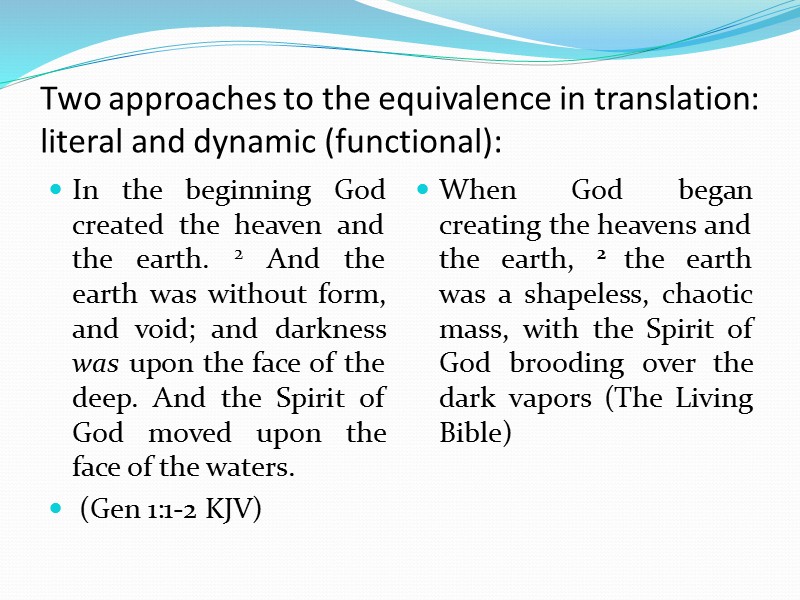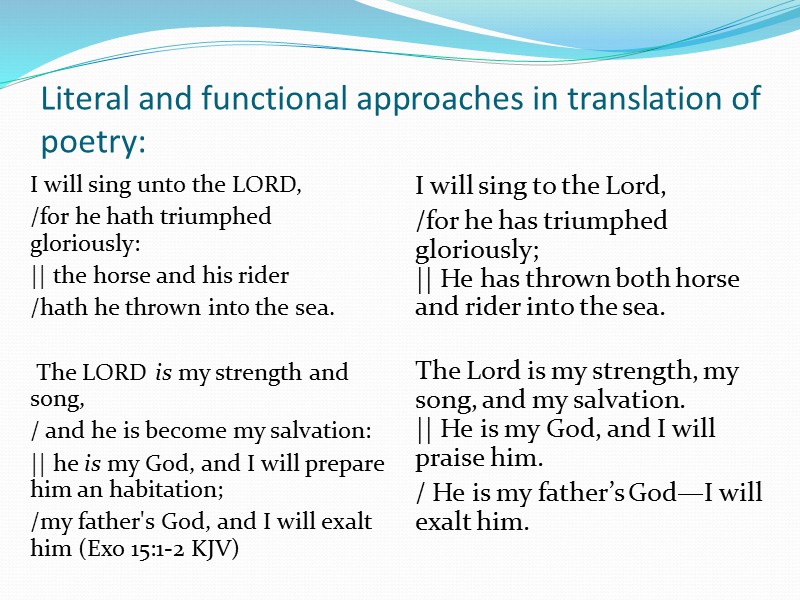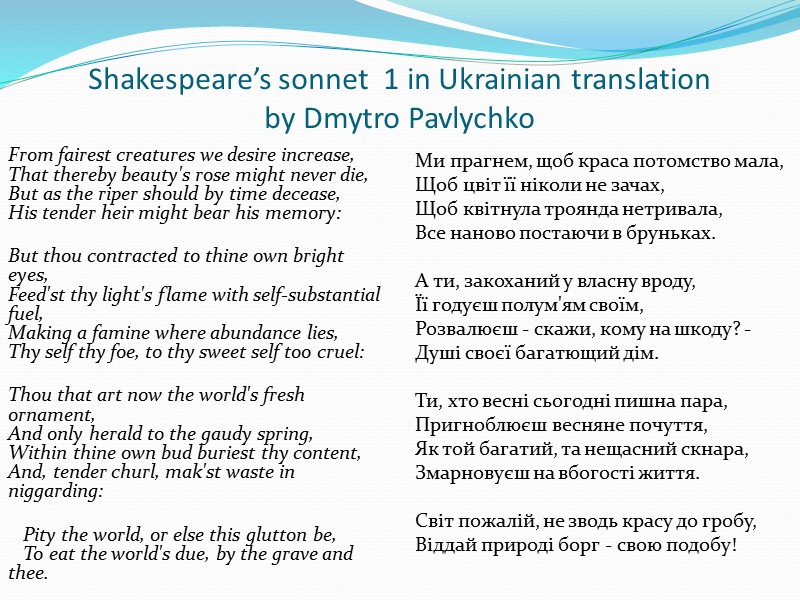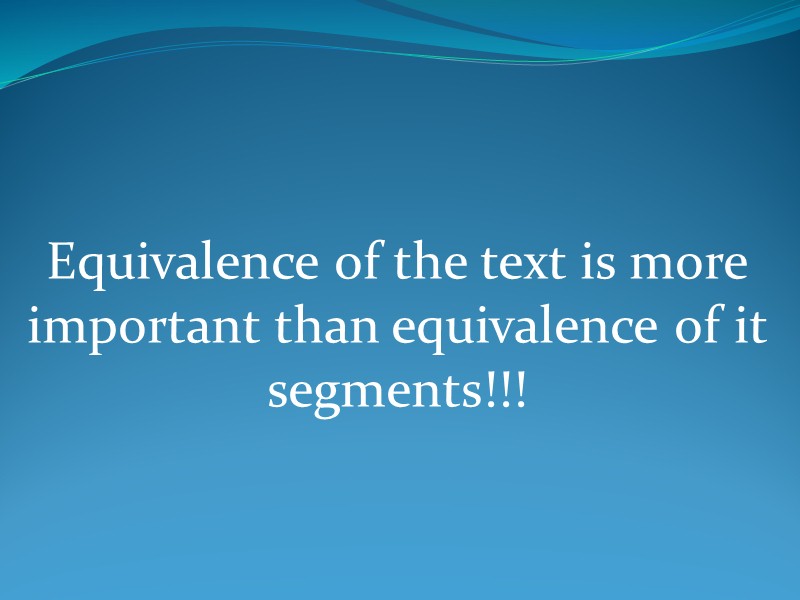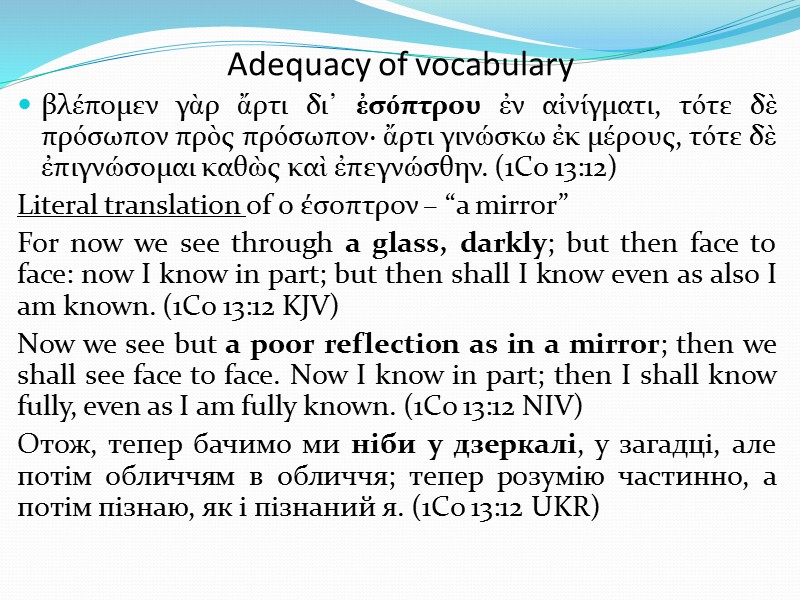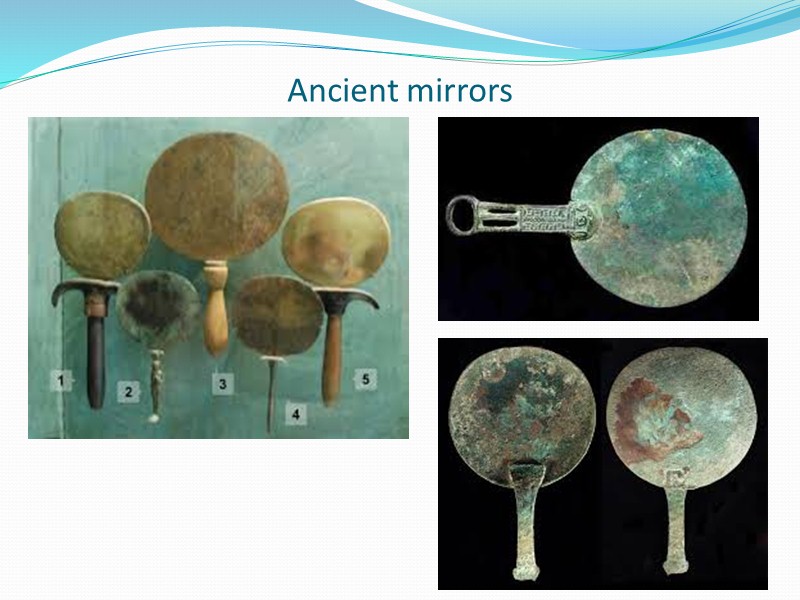A. Lexical
Meaning
every
word (lexical unit) has . . . something that is individual, that makes it
different from any other word. And it is just the lexical meaning which is
the most outstanding individual property of the word. (Zgusta, 1971:67)
The
lexical meaning of a word or lexical unit may be thought of as the specific
value it has in a particular linguistic system and the ‘personality’ it acquires through usage within that system. It
is rarely possible to analyse a word, pattern, or structure into distinct
components of meaning; the way in which language works is much too complex to
allow that. Nevertheless, it is sometimes useful to play down the complexities
of language temporarily in order both to appreciate them and to be able to
handle them better in the long run. With
this aim in mind, we will now briefly discuss a model for analysing the
components of lexical meaning. This model is largely derived from Cruse (1986),
but the description of register (2.2.3 below) also draws on Halliday
(1978). For alternative models of lexical meaning see Zgusta
(1971: Chapter 1) and Leech (1974:
Chapter 2).
2.2.1. Propositional vs expressive meaning
The propositional
meaning of a word or an utterance arises from the relation
between it and what it refers to or
describes in a real or imaginary world, as conceived by the speakers of the
particular language to which the word or utterance belongs. It is this type of
meaning which provides the basis on which we can judge an utterance as true or
false. For instance, the propositional meaning of shirt is ‘a piece of
clothing worn on the upper part of the body’. It would be inaccurate to use shirt,
under normal circumstances,to refer to a piece of clothing worn on the
foot, such as socks. When a translation is described as ‘inaccurate’, it
is often the propositional meaningthat is being called into question.
Expressive
meaning cannot be judged as true or false. This is because expressive
meaning relates to the speaker’s2 feelings or attitude rather thanto what words
and utterances refer to. The difference between Don’t complain and Don’t
whinge does not lie in their propositional meanings but in the expressiveness
of whinge, which suggests that the speaker finds the actionannoying. Two
or more words or utterances can therefore have the samepropositional meaning
but differ in their expressive meanings. This is true not only of words and
utterances within the same language, where such words are often referred to as
synonyms or near-synonyms, but also for words
and utterances from different
languages. The difference between famous in English and fameux in
French does not lie in their respective propositional meanings; both items basically
mean ‘well-known’. It lies in their expressive meanings. Famous is
neutral in English: it has no inherent evaluative meaning or connotation. Fameux,
on the other hand, is potentially evaluative and can be readily used in
some contexts in a derogatory way (for example, une femme fameuse means,
roughly, ‘a woman of ill repute’). It is worth noting that differences between
words in the area of expressive
meaning are not simply a matter of
whether an expression of a certain attitude or evaluation is inherently present
or absent in the words in question. The same attitude or evaluation may be
expressed in two words or utterances in widely differing degrees of
forcefulness. Both unkind and cruel, for instance, are inherently
expressive, showing the speaker’s disapproval of someone’s attitude. However, the element of disapproval
in cruel is stronger than it is in unkind. The meaning of a word
or lexical unit can be both propositional and expressive, e.g. whinge, propositional
only, e.g. book, or expressive only, e.g. bloody and various
other swear words and emphasizers. Words which contribute solely to expressive
meaning can be removed from an utterance without affecting its information
content. Consider, for instance, the wordsimply in the following text:
2.2.2 Presupposed
meaning
Presupposed
meaning arises from co-occurrence restrictions, i.e. restrictions
on what other words or expressions
we expect to see before or after a particular lexical unit. These restrictions
are of two types:
1. Selectional restrictions: these
are a function of the propositional meaning of a word. We expect a human
subject for the adjective studious and an inanimate one for geometrical.
Selectional restrictions are deliberately violated in the case of
figurative language but are otherwise strictly observed.
2. Collocational restrictions: these
are semantically arbitrary restrictions which do not follow logically from the
propositional meaning of a word. For instance, laws are broken in
English, but in Arabic they are ‘contradicted’. In English, teeth are brushed,
but in German and Italian they are ‘polished’, in Polish they are ‘washed’,
and in Russian they are ‘cleaned’. Because they are arbitrary, collocational
restrictions tend to show more variation across languages than do selectional
restrictions.
The
difference between selectional and collocational restrictions is not always
as clear cut as the examples given
above might imply. For example, in the following English translation of a
German leaflet which accompanies Baumler products (men’s suits), it is
difficult to decide whether the awkwardness of the wording is a result of
violating selectional or collocational restrictions:
Dear Sir
I am very pleased that you have
selected one of our garments. You have made a wise choice, as suits, jackets
and trousers eminating from our Company are amongst the finest products Europe
has to offer.
Ideas, qualities, and feelings
typically emanate (misspelt as eminate in the above text) from a
source, but objects such as trousers and jackets do not, at least
not in English. The awkwardness of the wording can be explained in terms of
selectional or collocational restrictions, depending on whether or not one sees
the restriction involved as a function of the prepositional meaning of emanate.
3. Evoked meaning
Evoked
meaning arises from dialect and register variation. A dialect is
a variety of language which has currency within a specific community or
group of speakers. It may be classified on one of the following bases:
1. Geographical (e.g. a Scottish
dialect, or American as opposed to British English: cf. the difference between lift
and elevator);
2. Temporal (e.g. words and
structures used by members of different age groups within a community, or words
used at different periods in the history of a language: cf. verily and really);
3. Social (words and structures used
by members of different social classes: cf. scent and perfume, napkin
and serviette).
Register is a variety of language that a language user considers appropriate
to a specific situation. Register
variation arises from variations in the
following:
1. Field of
discourse: This is an abstract term for ‘what is going on’ that is
relevant to the speaker’s choice of linguistic items. Different
linguistic choices are made by different speakers depending on what kind of
action other than the immediate action of speaking they see themselves as participating
in. For example, linguistic choices will vary according to whether the speaker
is taking part in a football match or discussing football;
making love or discussing love;
making a political speech or discussing politics; performing an operation or
discussing medicine.
2. Tenor of
discourse: An abstract term for the relationships between the
people
taking part in the discourse. Again, the language people use varies depending
on such interpersonal relationships as mother/ child, doctor/ patient, or
superior/inferior in status. A patient is unlikely to use swear words in
addressing a doctor and a mother is unlikely to start a request to her child
with I wonder if you could . . . Getting the tenor of discourse right in
translation can be quite difficult. It depends on whether one sees a certain
level of formality as ‘right’ from the perspective of the source culture or the
target culture. For example, an American teenager may adopt a highly informal
tenor with his/her parents by, among other things, using their first names
instead of Mum/Mother and Dad/Father. This level of informality
would be highly inappropriate in most other cultures.
3. Mode of
discourse: An abstract term for the role that the language is playing
(speech, essay, lecture, instructions) and for its medium of transmission
(spoken, written).3 Linguistic choices are influenced by these dimensions. For example, a word such as re
is perfectly appropriate in a business letter but is rarely, if ever, used
in spoken English.
B. THE
PROBLEM OF NON-EQUIVALENCE
Based
on the above discussion, we can now begin to outline some of the more common
types of non-equivalence which often pose difficulties for the translator and
some attested strategies for dealing with them. First, a word of warning. The
choice of a suitable equivalent in a given context depends on a wide variety of
factors. Some of these factors may be strictly linguistic. Other factors may be
extra-linguistic. It is virtually impossible to offer absolute guidelines for
dealing with the various types of nonequivalence which exist among languages.
The most that can be done in this and the following chapters is to suggest
strategies which may be used to dealwith non equivalence ‘in some contexts’.
The choice of a suitable equivalent will always depend not only on the
linguistic system or systems being handled by the translator, but also on the
way both the writer of the source text and the producer of the target text,
i.e. the translator, choose to manipulate the linguistic systems in question.
2.3.1 Semantic
fields and lexical sets – the segmentation of experience
The
words of a language often reflect not so much the reality of the world,
but the interests of the people who
speak it. (Palmer, 1976: 21) It is sometimes useful to view the vocabulary of a
language as a set of words referring to a series of conceptual fields. These
fields reflect the divisions and sub-divisions ‘imposed’ by a given linguistic
community on the continuum of experience.4 In linguistics, the divisions are
called semantic fields. Fields are abstract concepts. An example
of a semantic field would be the field of SPEECH, or PLANTS, or VEHICLES. A large
number of semantic fields are common to all or most languages. Most, if not
all, languages will have fields of DISTANCE, SIZE, SHAPE, TIME, EMOTION,
BELIEFS, ACADEMIC SUBJECTS, and NATURAL PHENOMENA. The actual words and
expressions under each field are sometimes called lexical sets.5 Each
semantic field will normally have several sub-divisions or lexical sets under
it, and each subdivision will have further sub-divisions and lexical sets. So,
the field of SPEECH in English has a sub-division of VERBS OF SPEECH which
includes general verbs such as speak and say and more specific
ones such as mumble, murmur, mutter, and whisper. It seems
reasonable to suggest that the more detailed a semantic field is in a given
language, the more different it is likely
to be from related semantic fields
in other languages. There generally tends to be more agreement among languages
on the larger headings of semantic fields and less agreement as the sub-fields
become more finely differentiated. Most languages are likely to have
equivalents for the more general verbs of speech such as say and speak,
but many may not have equivalents for the more specific ones. Languages
understandably tend to make only those distinctions in meaning which are
relevant to their particular environment, be it physical, historical,
political, religious, cultural, economic, legal, technological, social, or
otherwise.
Limitations aside, there are two
main areas in which an understanding of semantic fields and lexical sets can be
useful to a translator:
a. appreciating the ‘value’ that a
word has in a given system; and
b. developing strategies for dealing
with non-equivalence.
(a) Understanding the difference in
the structure of semantic fields in the source and target languages allows a
translator to assess the value of a given item in a lexical set. If you know
what other items are available in a lexical set and how they contrast with the
item chosen by a writer or speaker, you can appreciate the significance of the
writer’s or speaker’s choice. You can understand not only what something is,
but also what it is not. This is best illustrated by an example.
In
the field of TEMPERATURE, English has four main divisions: cold, cool, hot and
warm. This contrasts with Modern Arabic, which has four different divisions:
baarid (‘cold/cool’), haar (‘hot: of the weather’), saakhin (‘hot:
of objects’), and daafi’ (‘warm’). Note that, in contrast with
English, Arabic (a) does not distinguish between cold and cool,
and (b) distinguishes between the hotness of the weather and the
hotness of other things. The fact that English does not make the latter
distinction does not mean that you can always use hot to describe
the temperature of something, even metaphorically (cf. hot temper, but
not * hot feelings). There are restrictions on the cooccurrence
of words in any language (see discussion of collocation: Chapter 3,
section 3.1). Now consider the following examples from the COBUILD corpus
of English:6
1. The air was cold and the wind was
like a flat blade of ice.
2. Outside the air was still cool.
Bearing in mind the differences in
the structure of the English and Arabic fields, one can appreciate, on the one
hand, the difference in meaning between cold and cool in the
above examples and, on the other, the potential difficulty in making such a
distinction clear when translating into Arabic.
(b) Semantic fields are arranged
hierarchically, going from the more general
to
the more specific. The general word is usually referred to as superordinate
and the specific word as hyponym.
In the field of VEHICLES, vehicle is a superordinate and bus,
car, truck, coach, etc. are all hyponyms of vehicle. It stands to
reason that any propositional meaning carried by a superordinate or general
word is, by necessity, part of the meaning of each of its hyponyms, but not
vice versa. If something is a bus, then it must be a vehicle, but not the other
way round. We can sometimes manipulate this feature of semantic fields when we
are faced with semantic gaps in the target language. Translators often deal
with semantic gaps by modifying a superordinate word or by means of
circumlocutions based on modifying superordinates. More on this in the
following section.
2.3.2
Non-equivalence at word level and some common strategies for
dealing with it
Non-equivalence
at word level means that the target language has no direct equivalent for a
word which occurs in the source text. The type and level of difficulty posed
can vary tremendously depending on the nature of nonequivalence. Different
kinds of non-equivalence require different strategies, some very
straightforward, others more involved and difficult to handle. Since, in
addition to the nature of non-equivalence, the context and purpose of
translation will often rule out some strategies and favour others, I will keep
the discussion of types of non-equivalence separate from the discussion of
strategies used by professional translators. It is neither possible nor helpful
to attempt to relate specific types of non-equivalence to specific strategies, but
I will comment on the advantages or disadvantages of certain strategies wherever
possible
.
2.3.2.1 Common
problems of non-equivalence
The
following are some common types of non-equivalence at word level, with examples
from various languages
:
(a) Culture-specific concepts
The
source-language word may express a concept which is totally unknown in the
target culture. The concept in question may be abstract or concrete; it may
relate to a religious belief, a social custom, or even a type of food. Such concepts
are often referred to as ‘culture-specific’. An example of an abstract English
concept which is notoriously difficult to translate into other languages is
that expressed by the word privacy. This is a very ‘English’ concept
which is rarely understood by people from other cultures. Speaker (of
the House of Commons) has no equivalent in many languages, such as Russian,
Chinese, and Arabic among others. It is often translated into Russian as
‘Chairman’, which does not reflect the role of the Speaker of the House of Commons
as an independent person who maintains authority and order in
Parliament. An example of a concrete
concept is airing cupboard in Englishwhich, again, is unknown to
speakers of most languages.
(b) The source-language concept is
not lexicalized in the target language
The source-language word may express
a concept which is known in the target culture but simply not lexicalized, that
is not ‘allocated’ a targetlanguage word to express it. The word savoury has
no equivalent in many languages, although it expresses a concept which is easy
to understand. The adjective standard (meaning ‘ordinary, not extra’, as
in standard range of products) also expresses a concept which is
very accessible and readily understood by most people, yet Arabic has no
equivalent for it. Landslide has no ready equivalent in many languages,
although it simply means overwhelming majority’.
(c) The source-language word is semantically
complex
The
source-language word may be semantically complex. This is a fairly common
problem in translation. Words do not have to be morphologically complex to be
semantically complex (Bolinger and Sears, 1968). In otherwords, a single word
which consists of a single morpheme can sometimes express a more complex set of
meanings than a whole sentence. Languages automatically develop very concise
forms for referring to complex concepts if the concepts become important enough
to be talked about often. Bolinger and Sears suggest that ‘If we should ever
need to talk regularly and frequentlyabout independently operated sawmills from
which striking workers are locked out on Thursday when the temperature is
between 500° and 600°F, we would find a concise way to do it’ (ibid.: 114). We
do not usually realize
how semantically complex a word is
until we have to translate it into a language which does not have an equivalent
for it. An example of such a semantically complex word is arruação, a
Brazilian word which means clearing the ground under coffee trees of rubbish
and piling it in the middle of the row in order to aid in the recovery of beans
dropped during harvesting’ (ITI News, 1988: 57).7
(d) The source and target languages
make different distinctions in meaning
The
target language may make more or fewer distinctions in meaning than the source
language. What one language regards as an important distinction in meaning
another language may not perceive as relevant. For example, Indonesian makes a
distinction between going out in the rain without the knowledge that it is raining
(kehujanan) and going out in the rain with the knowledge that it is
raining (hujan-hujanan). English does not make this distinction, with
the result that if an English text referred to going out in the rain, the
Indonesian translator may find it difficult to choose the right
equivalent, unless the context makes
it clear whether zor not the person in question
knew that it was raining.
(e)
The target language lacks a superordinate
The
target language may have specific words (hyponyms) but no general word
(superordinate) to head the semantic field. Russian has no ready equivalent for
facilities, meaning ‘any equipment, building, services, etc. that are
provided for a particular activity or purpose’.8 It does, however, have several
specific words and expressions which can be thought of as types of facilities,
for example sredstva peredvizheniya (‘means of transport’), naem
(‘loan’), neobkhodimye pomeschcheniya (‘essential accommodation’), and neobkhodimoe
oborudovanie (‘essential equipment’).
f)
The target language lacks a specific term (hyponym)
More commonly,
languages tend to have general words (superordinates) but lack specific ones
(hyponyms), since each language makes only those distinctions in meaning which
seem relevant to its particular environment.
There are
endless examples of this type of non-equivalence. English has many hyponyms
under article for which it is difficult to find precise equivalents in other
languages, for example feature, survey, report, critique, commentary,
review, and many more. Under house, English again has a variety of
hyponyms which have no equivalents in many languages, for example bungalow,
cottage, croft, chalet, lodge, hut, mansion, manor, villa, and hall. Under
jump we find more specific verbs such as leap, vault, spring, bounce,
dive, clear, plunge, and plummet.
g)
Differences in physical or interpersonal perspective
Physical
perspective has to do with where things or people are in relation to one
another or to a place, as expressed in pairs of words such as come/go,
take/bring, arrive/depart, and so on. Perspective may also include the
relationship between participants in the discourse (tenor). For example,
Japanese has six equivalents for give, depending on who gives to whom: yaru,
ageru, morau, kureru, itadaku, and kudasaru (McCreary, 1986).
h)
Differences in expressive meaning
There may be a
target-language word which has the same propositional meaning as the
source-language word, but it may have a different expressive meaning. The
difference may be considerable or it may be subtle but important enough to pose
a translation problem in a given context. It is usually easier to add
expressive meaning than to subtract it. In other words, if the target-language
equivalent is neutral compared to the source-language item, the translator can
sometimes add the evaluative element by means of a modifier or adverb if
necessary, or by building it in somewhere else in the text. So, it may be possible,
for instance, in some contexts to render the English verb batter (as in
child/wife battering) by the more neutral Japanese verb tataku, meaning
‘to beat’, plus an equivalent modifier such as ‘savagely’ or ‘ruthlessly’.
Differences in expressive meaning are usually more difficult to handle when the
target-language equivalent is more emotionally loaded than the source-language
item. This is often the case with items which relate to sensitive issues such
as religion, politics, and sex. Words like homosexuality and homosexual
provide good examples. Homosexuality is not an inherently pejorative
word in English, although it is often used in this way. On the other hand, the
equivalent expression in Arabic, shithuth jinsi (literally: ‘sexual
perversion’), is inherently more pejorative and would be quite difficult to use
in a neutral context without suggesting strong disapproval.
i)
Differences in form
There is often
no equivalent in the target language for a particular form in the source text.
Certain suffixes and prefixes which convey propositional and other types of
meaning in English often have no direct equivalents in other languages. English
has many couplets such as employer/employee, trainer/trainee, and payer/payee.
It also makes frequent use of suffixes such as -ish (e.g. boyish,
hellish, greenish) and -able (e.g. conceivable, retrievable,
drinkable). Arabic, for instance, has no ready mechanism for producing such
forms and so they are often replaced by an appropriate paraphrase, depending on
the meaning they convey (e.g. retrievable as ‘can be retrieved’ and drinkable
as ‘suitable for drinking’). Affixes which contribute to evoked meaning,
for instance by creating buzz words such as washateria, carpeteria, and groceteria
(Bolinger and Sears, 1968), and those which convey expressive meaning, such
as journalese, translationese, and legalese (the -ese suffix
usually suggests disapproval of a muddled or stilted form of writing) are more
difficult to translate by means of a paraphrase. It is relatively easy to
paraphrase propositional meaning, but other types of meaning cannot always be
spelt out in a translation. Their subtle contribution to the overall meaning of
the text is either lost altogether or recovered elsewhere by means of
compensatory techniques.
j)
Differences in frequency and purpose of using specific forms
Even when a
particular form does have a ready equivalent in the target language, there may
be a difference in the frequency with which it is used or the purpose for which
it is used. English, for instance, uses the continuous — ing form for
binding clauses much more frequently than other languages which have
equivalents for it, for example German and the Scandinavian languages.
Consequently, rendering every -ing form in an English source text with
an equivalent -ing form in a German, Danish, or Swedish target text
would result in stilted, unnatural style.
k)
The use of loan words in the source text
The use of loan words in the source text poses a special
problem in translation. Quite apart from their respective prepositional
meaning, loan words such as au fait, chic, and alfresco in
English are often used for their prestige value, because they can add an air of
sophistication to the text or its subject matter. This is often lost in
translation because it is not always possible to find a loan word with the same
meaning in the target language. Dilettante is a loan word in English,
Russian, and Japanese; but Arabic has no equivalent loan word. This means that
only the prepositional meaning of dilettante can be rendered into
Arabic; its stylistic effect would almost certainly have to be sacrificed.
The above are some of the more common examples of non-equivalence
among languages and the problems they pose for translators. In dealing with any
kind of non-equivalence, it is important first of all to assess its
significance and implications in a given context. Not every instance of
non-equivalence you encounter is going to be significant. It is neither
possible nor desirable to reproduce every aspect of meaning for every word in a
source text. We have to try, as much as possible, to convey the meaning of key
words which are focal to the understanding and development of a text, but we
cannot and should not distract the reader by looking at every word in isolation
and attempting to present him/her with a full linguistic account of its
meaning.
STRATEGIES USED BY PROFESSIONAL TRANSLATORS
With the above proviso in mind, we can now
look at examples of strategies used by professional translators
for dealing with various types of nonequivalence. In each example,
the source-language word which represents a translation problem is
underlined. The strategy used by the translator is highlighted in
bold in both the original translation and the back-translated version.
Only the strategies used for dealing with non-equivalence at word level
will be commented on. Other strategies and differences between the source
and target texts are dealt with in subsequent chapters.
a)
Translation by a more
general word (superordinate)
This is one of
the commonest strategies for dealing with many types of nonequivalence,
particularly in the area of propositional meaning. It works equally well in
most, if not all, languages, since the hierarchical structure of semantic
fields is not language-specific.
Example D
Source text (China’s Panda Reserves; see Appendix 3, no. 3):
Today there may be no more than 1000 giant
pandas left in the wild, restricted to a few mountain strongholds in the
Chinese provinces of Sichuan, Shaanxi and Gansu.
Target text (back-translated from Chinese):
Today there may be only 1000 big pandas which still remain in the wild
state, restricted to certain mountain areas in China’s Sichuan, Shaanxi
and Gansu.
What the translators of the above extracts have done is to go up a
level in a given semantic field to find a more general word that covers the
core propositional meaning of the missing hyponym in the target language.
(b) Translation by a more neutral/less expressive word
Example
A
Source text: (Morgan Matroc – ceramics company brochure; see Appendix 2):
Today people are aware that modern ceramic materials offer unrivalled
properties for many of our most demanding industrial applications. So is this
brochure necessary; isn’t the ceramic market already overbombarded with
technical literature; why should Matroc add more?
Because someone mumbles, ‘Our competitors do it.’ But why should we
imitate our competitors when Matroc probably supplies a greater range of
ceramic materials for more applications than any other manufacturer.
Target text: (Italian):
Qualcuno suggerisce: ‘i nostri concorrenti lo fanno.’
Someone suggests: ‘Our competitors do it.’
There is a noticeable difference in the expressive meaning of mumble
and its nearest Italian equivalent, mugugnare. The English verb mumble
suggest confusion or embarrassment, as can be seen in the following
examples:9
Simon mumbled confusedly: ‘I don’t believe in
the beast.’
I looked at the ground, shuffled my feet and
mumbled something defensive.
‘I know it wasn’t very successful,’ he
mumbled. ‘But give me another
chance.’
The Italian near equivalent, mugugnare, on the other hand,
tends to suggest dissatisfaction rather than embarrassment or confusion.
Possibly to avoid conveying the wrong expressive meaning, the Italian
translator opted for a more general word, suggerisce (‘suggest’).
(c) Translation by cultural substitution
This strategy involves replacing a culture-specific item or expression
with a target-language item which does not have the same propositional meaning
but is likely to have a similar impact on the target reader. The main advantage
of using this strategy is that it gives the reader a concept with which s/he
can identify, something familiar and appealing. On an individual level, the
translator’s decision to use this strategy will largely depend on (a) how much
licence is given to him/ her by those who commission the translation and (b) he
purpose of the translation. On a more general level, the decision will also
reflect, to some extent, the norms of translation prevailing in a given
community. Linguistic communities vary in the extent to which they tolerate
strategies that involve significant departure from the propositional meaning of
the text.
Example :
Source text (The Patrick Collection – a leaflet produced
by a privately owned museum of classic cars; see Appendix 4):
The Patrick Collection has restaurant facilities to suit every taste –
from the discerning gourmet, to the Cream Tea expert.
Target text
(Italian):
. . . di soddisfare tutti i gusti: da quelli del gastronomo esigente a
quelli
dell’esperto di pasticceria.
. . . to satisfy all tastes: from those of the demanding gastronomist
to
those of the expert in pastry.
In Britain, cream tea is ‘an afternoon meal consisting of tea to drink
and scones with jam and clotted cream to eat. It can also include sandwiches
and cakes.’12 Cream tea has no equivalent in other cultures. The Italian
translator replaced it with ‘pastry’, which does not have the same meaning (for
one thing, cream tea is a meal in Britain, whereas ‘pastry’ is only a type of
food). However, ‘pastry’ is familiar to the Italian reader and therefore
provides a good cultural substitute.
This strategy involves replacing a
culture-specific item with a target language item which does not have the same
meaning but may have a similar [impact] influence on the receptor.
|
Source text |
Target text [Italian] |
|
The |
…………………….to |
In Britain, cream tea is “an afternoon meal” consisting of tea to
drink and scones with jam and clotted cream to eat. It can also include
sandwishes and cakes.
d. Translation by
using a loan word plus explanation
We use this strategy to deal with culture-specific items/ notions/concepts,
especially modern concepts.
|
Source text |
Target text [German] |
|
The |
…vom |
e. Translation by
paraphrase [ using a related / close word ]
The concept in the source text is lexicalized but the source text
is significantly higher than the natural target language
|
Source text |
Target text [ German ] |
|
Hot |
In |
f. Translation
by paraphrase [ using a unrelated word ]
The concept in the source text is not lexicalised in
the receptor text [ so this means there is no equivalent word / lexical unit]
à The
translator has to paraphrase by using unrelated words
|
Source text |
Target text [in German] |
|
You |
In |
à “alfresco”
and “in the open” have the same propositional meaning but different evoked meaning
|
Source text |
Target text [ in Arabic] |
|
They On |
The …………….with |
The main advantage of
the paraphrase strategy is that it achieves a high level of precision in
specifying propositional meaning.
g. Translation
by omision
This strategy may sound rather drastic, but
in fact it does no harm to omit translating a word expression in some context.
|
Source text |
Target text |
|
This |
Here |
h.
translation by illustration
This strategy to useful option if the word which
lacks an equivalent.
— Lipton Yellow Tea Packet in
Arab market as Tagged teabags
refrensi : Mona Baker, In other word
TYPES AND LEVELS OF EQUIVALENCE Lectures # 4-5 By Dr. Dmytro Tsolin
What is equivalence in translation? Equivalence in translation is a functional coincidence between the source and the target text (А. Попович 1980). Equivalent is an element of the target language whose function coincides with other element of the source language with the same function (О. Ахманова 1966).
Equivalence and Adequacy Many scholars use these terms as synonyms (R. Levitsky, J. Catford). V. N. Komissarov considers “adequacy” as a characteristic of translation in general, while “equivalence” describes correlation between units of SL and TL. Adequacy as a kind of correlation between ST and TT which takes into account the aim of translation has been considered by K. Reiss and G. Vermeer. In translation equivalence is set not between word-signs as themselves, but between actual signs as segments of the text (A. Schweizer).
Correlation between equivalence and adequacy according to A. Schweizer equivalence adequacy object object Translation as a result Translation as a process
Equivalence implies an adequate rendering of SL-codes by TL-codes; this process includes the following levels: Adequacy of vocabulary (taking into account semantic connotations of the words and their stylistic functions) Grammatical adequacy Correspondence between syntactic constructions of SL and TL (literal rendering is not always possible) Translation of idioms on the base of semantic equivalence (they cannot be translated literally) Contextual adequacy (at the level of macrotextual elements cohesion) Stylistic correspondence between ST and TL
Equivalence of the text is more important than equivalence of it segments!!!
Adequacy of vocabulary βλέπομεν γὰρ ἄρτι δι᾽ ἐσόπτρου ἐν αἰνίγματι, τότε δὲ πρόσωπον πρὸς πρόσωπον· ἄρτι γινώσκω ἐκ μέρους, τότε δὲ ἐπιγνώσομαι καθὼς καὶ ἐπεγνώσθην. (1Co 13:12) Literal translation of ο έσοπτρον – “a mirror” For now we see through a glass, darkly; but then face to face: now I know in part; but then shall I know even as also I am known. (1Co 13:12 KJV) Now we see but a poor reflection as in a mirror; then we shall see face to face. Now I know in part; then I shall know fully, even as I am fully known. (1Co 13:12 NIV) Отож, тепер бачимо ми ніби у дзеркалі, у загадці, але потім обличчям в обличчя; тепер розумію частинно, а потім пізнаю, як і пізнаний я. (1Co 13:12 UKR)
Ancient mirrors
וּפָגְשׁוּ צִיִּים אֶת־אִיִּים וְשָׂעִיר עַל־רֵעֵהוּ יִקְרָא אַךְ־שָׁם הִרְגִּיעָה לִּילִית וּמָצְאָה לָהּ מָנוֹחַ׃ [ūṕāḡšū́ ṣiyyī́m ʔeṯ-ʔiyyī́m wəśāʕī́r ʕal-rēʕēhū́ yiqrā́ʔ ʔaḵ-šā́m hirgīʕā́ līlīṯ ūmāṣəʔā́ lāh mānṓaḥ] The wild beasts of the desert shall also meet with the wild beasts of the island, and the satyr shall cry to his fellow; the screech owl also shall rest there, and find for herself a place of rest. (Isa 34:14 KJV) And the desert creatures shall meet with the wolves, the hairy goat also shall cry to its kind; Yes, the night monster shall settle there And shall find herself a resting place. (Isa 34:14 NAS) І будуть стрічатися там дикі звірі пустинні з гієнами, а польовик буде кликати друга свого; Ліліт тільки там заспокоїться і знайде собі відпочинок! (Isa 34:14 UKR)
Special terms from the ancient Mesopotamian mythology: ṣiyyī́m – demos of desert śāʕī́r – demon in the shape of goat līlīṯ – lilith (night she-demon relating to sexual life)
What to do, if TL does not have equivalent counterparts for some lexemes of SL? ṣiyyī́m – “wild beasts” / “the desert creatures” / «дикі звірі пустині» śāʕī́r – “the satyr” / “the hairy goat” / «польовик» līlīṯ – “the screech owl” / “the night monster” / «Ліліт» To create a neologism on the base of the SL-term (“Lilith”) To find a word or phrase which describes the SL-term approximately (“wild beasts”, “the desert creatures”) To use a loanword (with similar meaning) which is well-know in TL (“the satyr” from Greek σατυρος)
Grammatical and syntactic equivalence How to translate correctly the following English sentences into Ukrainian? My mum was baking an apple pie in the kitchen when a shot rang out in the street. I have just finished my homework. If you hadn’t lost the key, we would have got the concert in time.
The problem is that in Ukrainian are not direct equivalents for the following grammatical forms: Past continuous (durative action in the past coincides with минулий недоконаний). Present Perfect (coincides with минулий доконаний). Third conditional (second and third conditionals coincide formally in Ukrainian: якби + минулий час. дієслова, би + минулий час. дієслова). Adequate translation is possible? Of course. Моя мама пекла пиріг з яблуками, коли на вулиці прогримів постріл. Я тільки-но закінчив свою робити хатню роботу. Якби ти не забув ключ, ми б встигли на концерт.
In the first case the durative aspect is clear out of the context: it is said about a short period of time in the past, not about a habitual action. In the second case the perfect aspect is highlighted with the particle –но (which, however, is not obligatory here). In the third case it is quite clear that the speaker tells about the past from the context. It means that differences between the grammar of SL and TL may be compensated with other linguistic factors: syntax, context, particles, cohesion of text, etc.
Contextual Adequacy Only limited number of words have one meaning, but most of them have several semantic variants which may be clarified from the context. Words with one meaning are mainly special terms or lexemes which designate specific items: allusion, organization, technology, methodology, dodder, dog-bee, etc. Words with many meanings prevail in any language: He received a special membership card and a club pin onto his lapel. One of them cleverly decorates a vase by drawing plant leaves using a sharp pin, while another shapes small frog-like figures to be put on ashtrays.
She was very nimble on her pins. A bolt from the blue. A great bolt of white lightning flashed out of thin air. Crossbow bolts and arrows passed like clouds across the face of the sun. The room is stacked with bolts of cloth. Those leaves which present a double or quadruple fold, technically termed «the bolt».
Translation of idioms: The captain held his peace that evening and for many evenings to come (R. Stevenson) Literal (mechanical) translation: Капітан тримав свій мир того вечора і протягом багатьох наступних вечорів. Correct translation: Капітан мовчав / тримав язик за зубами того вечора і протягом наступних вечорів. Miss Williams will look after you well because she knows the ropes (J. Aldridge) Literal translation: Міс Уільямс догляне тебе добре, бо вона знає мотузки. Correct translation: Міс Уільямс потурбується про тебе добре / належно, бо вона знає свою справу.
Her father kissed her when she left him with lips which she was sure had trembled. From the warmth of her embrace he probably divined that he had let the cat out of the bag (J. Galsworthy). Literal translation: Її батько поцілував її, коли вона покидала його, устами, про які вона була упевнена, що вони затремтіли. Із теплоти її обіймів він напевне здогадався, що випустив кота з мішка. Correct translation: Її батько поцілував її, коли вона йшла від нього, устами, які, здалося їй, затремтіли. Із теплоти її обіймів він напевне здогадався, що видав свої почуття.
Examples from Greek and Hebrew τῶν ἄλλων νομοθετῶν οἱ μὲν ἀκαλλώπιστα καὶ γυμνὰ τὰ νομισθέντα παρ᾽ αὐτοῖς εἶναι δίκαια διετάξαντο, οἱ δὲ πολὺν ὄγκον τοῖς νοήμασι προσπεριβαλόντες ἐξετύφωσαν τὰ πλήθη μυθικοῖς πλάσμασι τὴν ἀλήθειαν ἐπικρύψαντες. (Philo of Alexandria, On the Creation of the World, 1:1). Of other lawgivers, some have set forth what they considered to be just and reasonable, in a naked and unadorned manner, while others, investing their ideas with an abundance of amplification, have sought to bewilder the people, by burying the truth under a heap of fabulous inventions (Translation of F. H. Colson and G. H. Whitaker). Из законодателей одни просто и без прикрас узаконили существовавшие у них обычаи, другие, придавая вид многозначительности [своим] измышлениям, обморочили людей, сокрыв истину под пеленой мифических выдумок (Translation of A.V. Vdovichenko).
What has the English translator changed in the text? The word order: (S)AOV of the Greek text became SVOA in the English translation. οἱ μὲν ἀκαλλώπιστα καὶ γυμνὰ τὰ νομισθέντα παρ᾽ αὐτοῖς εἶναι δίκαια διετάξαντο some have set forth what they considered to be just and reasonable, in a naked and unadorned manner They inserted subject “they” (it is implicated in the article οι in the Greek text) and object “people”. Some words and phrases in English translation are changed: τὰ πλήθη μυθικοῖς (literally: plenty / abundance of myths) – an abundance of amplification ἐπικρύψαντες (literally: concealed) – by burying May we call this translation equivalent?
The literal translation into Ukrainian Із інших законодавців деякі без прикрас і голо ті, що встановлені [звичаї] у них були, правильними запровадили; інші ж, великої ваги думкам [своїм] надавши, обманули, великою кількістю міфів плівкою істину приховавши. The adapted Ukrainian translation Щодо інших законодавців, то деякі з них без прикрас і не соромлячись законними оголосили ті звичаї, що в них побутували раніше; інші ж, намагаючись надати великої ваги своїм власним думкам, ввели в оману людей, приховавши істину за ширмою численних міфів.
Another example: translation from Hebrew syntactic construction finite verb + infinitivus absolutus וַיְשַׁלַּח אֶת־הָעֹרֵב וַיֵּצֵא יָצוֹא וָשׁוֹב עַד־יְבֹשֶׁת הַמַּיִם מֵעַל הָאָרֶץ׃ [wayəšalláḥ ʔeṯ-haʕōrḗḇ wayyēṣḗʔ yāṣṓʔ wāšṓḇ ʕaḏ-yəḇṓšeṯ hammā́yim mēʕal hāʔā́reṣ] And he sent out a raven, and it flew here and there until the water was dried up from the earth. (Gen 8:7 NAS) І вислав він крука. І літав той туди та назад, аж поки не висохла вода з-над землі. (Gen 8:7 UKR) Literal translation of [wayyēṣḗʔ yāṣṓʔ]: and it flew flying Notional translation: and it flew here and there (repetitive action)
What is the main problems of equivalence in translation? How close must TT be to ST to avoid perversion of the original meaning, form and intension? How far may TT depart from ST to be perceived adequately in TL? How to find a balance? 23
Part 2 CONCEPTS OF EQUIVALENCE IN TRANSLATION
Jean-Paul Vinay and Jean Darbelnet theory Vinay and Darbelnet view equivalence-oriented translation as a procedure which ‘replicates the same situation as in the original, whilst using completely different wording’ (1995, p. 342). They also suggest that, if this procedure is applied during the translation process, it can maintain the stylistic impact of the SL text in the TL text. According to them, equivalence is therefore the ideal method when the translator has to deal with proverbs, idioms, clichés, nominal or adjectival phrases and the onomatopoeia of animal sounds.
Later they note that glossaries and collections of idiomatic expressions ‘can never be exhaustive’ (ibid.:256). They conclude by saying that ‘the need for creating equivalences arises from the situation, and it is in the situation of the SL text that translators have to look for a solution’ (ibid.: 255). Indeed, they argue that even if the semantic equivalent of an expression in the SL text is quoted in a dictionary or a glossary, it is not enough, and it does not guarantee a successful translation. 26
Roman Jacobson’s Theory of Equivalence “These three kinds of translation are to be differently labeled: 1 Intralingual translation or rewording is an interpretation of verbal signs by means of other signs of the same language. 2 Interlingual translation or translation proper is an interpretation of verbal signs by means of some other language. 3 Intersemiotic translation or transmutation is an interpretation of verbal signs by means of signs of nonverbal sign systems” (1959, p. 233).
“Most frequently, however, translation from one language into another substitutes messages in one language not for separate code-units but for entire messages in some other language. Such a translation is a reported speech; the translator recodes and transmits a message received from another source. Thus translation involves two equivalent messages in two different codes”. 28
Eugene Nida’s Theory of Translation Nida argued that there are two different types of equivalence, namely formal equivalence (or formal correspondence) and dynamic equivalence. Formal correspondence ‘focuses attention on the message itself, in both form and content’, unlike dynamic equivalence which is based upon ‘the principle of equivalent effect’ (1964:159). This theory is mainly expressed in the book Nida, Eugene A. and C. R. Taber. The Theory and Practice of Translation (Leiden: E. J. Brill, 1969 / 1982).
Formal correspondence consists of a TL item which represents the closest equivalent of a SL word or phrase. Dynamic equivalence is defined as a translation principle according to which a translator seeks to translate the meaning of the original in such a way that the TL wording will trigger the same impact on the TC audience as the original wording did upon the ST audience.
The advantage of the Nida-Taber’s concept is in their interest in the message of the text or, in other words, in its semantic quality. The disadvantage of this approach is in its inability to render poetry: poetical text demands not only semantic adequacy, but aesthetic-emotional aspects of communication. 31
“It is hard, however, to empirically test whether the translator has succeeded in producing a dynamic equivalence. The methods suggested by Nida-Taber provide means to make sure that the translation is idiomatic, but they lack reference to the source text regarding form and semantics”. Christoffer Gehrmann 32
John Catford’s theory John Catford had a preference for a more linguistic-based approach to translation. His main contribution in the field of translation theory is the introduction of the concepts of types and shifts of translation. Catford proposed very broad types of translation in terms of three criteria: The extent of translation (full translation vs partial translation); The grammatical rank at which the translation equivalence is established (rank-bound translation vs. unbounded translation); The levels of language involved in translation (total translation vs. restricted translation).
Only the second type of translation concerns the concept of equivalencewhich are based on the distinction between formal correspondence and textual equivalence 34 An equivalent is sought in the TL for each word, or for each morpheme encountered in the ST. Equivalences are not tied to a particular rank, and we may additionally find equivalences at sentence, clause and other levels.
However, in the process of rendering from SL to TL a translator departs from formal correspondence. J. Catford calls these departures “shifts”. There are two main types of translation shifts: level shifts, where the SL item at one linguistic level (e.g. grammar) has a TL equivalent at a different level (e.g. lexis), and category shifts which are divided into four types: 35
Structure-shifts, which involve a grammatical change between the structure of the ST and that of the TT; Class-shifts, when a SL item is translated with a TL item which belongs to a different grammatical class, i.e. a verb may be translated with a noun; Unit-shifts, which involve changes in rank; Intra-system shifts, which occur when ‘SL and TL possess systems which approximately correspond formally as to their constitution, but when translation involves selection of a non-corresponding term in the TL system’ (ibid.:80). For instance, when the SL singular becomes a TL plural. 36
Catford was criticized very much for his linguistic theory of translation. His critics denoted that the translation process cannot simply be reduced to a linguistic exercise, as claimed by Catford for instance, since there are also other factors, such as textual, cultural and situational aspects, which should be taken into consideration when translating. Linguistics is the only discipline which enables people to carry out a translation, since translating involves different cultures and different situations at the same time and they do not always match from one language to another.
Juliane Hause’s concept of equivalance Juliane House (1977) is in favour of semantic and pragmatic equivalence and argues that ST and TT should match one another in function. In fact, according to her theory, every text is in itself is placed within a particular situation which has to be correctly identified and taken into account by the translator. if the ST and the TT differ substantially on situational features, then they are not functionally equivalent, and the translation is not of a high quality.
Central to House’s discussion is the concept of overt and covert translations. In an overt translation the TT audience is not directly addressed and there is therefore no need at all to attempt to recreate a ‘second original’ since an overt translation ‘must overtly be a translation’ (1977, p. 189). By covert translation, on the other hand, is meant the production of a text which is functionally equivalent to the ST. House also argues that in this type of translation the ST ‘is not specifically addressed to a TC audience’ (ibid., p. 194). 39
Mona Baker: different types of equivalence Equivalence that can appear at word level and above word level, when translating from one language into another. Equivalence at word level is the first element to be taken into consideration by the translator. In fact, when the translator starts analyzing the ST s/he looks at the words as single units in order to find a direct ‘equivalent’ term in the TL. Baker gives a definition of the term word since it should be remembered that a single word can sometimes be assigned different meanings in different languages and might be regarded as being a more complex unit or morpheme. This means that the translator should pay attention to a number of factors when considering a single word, such as number, gender and tense (ibid.:11-12).
Grammatical equivalence. She notes that grammatical rules may vary across languages and this may pose some problems in terms of finding a direct correspondence in the TL. In fact, she claims that different grammatical structures in the SL and TL may cause remarkable changes in the way the information or message is carried across. Textual equivalence. The equivalence between a SL text and a TL text in terms of information and cohesion. It is up to the translator to decide whether or not to maintain the cohesive ties as well as the coherence of the SL text. His or her decision will be guided by three main factors, that is, the target audience, the purpose of the translation and the text type. Pragmatic equivalence. The role of the translator is to recreate the author’s intention in another culture in such a way that enables the TC reader to understand it clearly.
Five types of equivalence in accordance with Verner Koller: Denotative: the main content of the text is preserved (or “invariance of the content”) Connotative: purposeful rendering of connotations of the text by using of synonyms (or “stylistic equivalence”) Text-normative: rendering of genre and norms of languages Pragmatic: orientation to a receiver (or “communicative equivalence”) Formal: rendering of formal specificities of the original text (word play, pun, individual vocabulary of characters, etc.).
Types (levels) of equivalence according to V.N. Komissarov (В.Н. Комиссаров) V. N. Komissarov singles out four stages of semantic commonality between ST and TT: Goals of communication; Identity of situations; Modes of description of the situation; Meaning of syntactic structures; Meaning of word-signs.
Goals of communication: at this level semantic commonalities between ST and TT are very weak. Maybe there is some chemistry between us doesn’t mix. Literal translation: Напевне, якась хімічна речовина між нами не змішалася. Idiomatic translation: Буває, що люди не сходяться характерами. Identity of situations: the same situation is describes, but in different modes in ST and TL. Не answered the telephone. Literal translation: Він відповів на телефон[ий дзвінок]. Adequate translation: Він зняв слухавку.
Modes of description of the situation: only general notions are preserved Scrubbing makes me bad-tempered. Lit.: Від миття підлоги у мене характер псується = В процесі «притирання» у мене псується характер. Meaning of syntactic structures: resemblance and invariance I told him what I thought of him. Я сказав йому свою думку про нього. Meaning of word-signs: in the translation all parts of ST are rendered in TT I saw him at the theatre. Я бачив його у театрі.
There are two extremes in translation: literalness and liberty – both of them distort the communicative context. Literalness is the lowest level of translation which is extended to the higher levels – textual and pragmatics. In most of cases this extension is not justified: literal translation is sub-transformed and quasi-adapted translation. An example: I want something human. Literal translation: Я хочу чогось людського. Correct translation: Хочу, щоб поряд була жива душа. (An old lady about her desire to get a puppy).
Different Types of Equivalence Literal equivalence – the case when everything is translated literally with the exception of the elements which are impossible to translate. Originally used in the translation of the sacred and poetical texts. Contextual equivalence – the author renders every single unit of the contents and preserves the norms of the target language. Adequate equivalence – the author renders all the meaningful units and preserves the original language means (units of translation) Functional/dynamic equivalence – trying to achieve the same reaction of the public. It may be denotative, syntactic, connotative, and pragmatic.
Literal equivalence This type of equivalence may be illustrated the best on the translation of the Biblical text (first of all of the Old Testament) into Indo-European languages. The translators set the following tasks: To translate the sacred text (which is considered as “the God’s Word”) as literally as possible; to make the text understandable for the potential readers; to adapt the text for the needs of audience (to use translated text in the liturgy, to support the religious worldview). Literal equivalence was a dominating approach to the translation of the Bible till 1950-60, when the methodology of Eugene Nide appeared.
It was a challenging task for the ancient translators because the source language (SL) belonged to the Semitic branch of the Afro-Asia family of languages, but the target language (TL) – to the Indo-European family; the biblical text contained different literary forms: prose, poetry, juridical and prophetical texts; there were many special cultic terms in the Old Testament which had not their counterparts in Greek; the messengers and their audiences lived some centuries before the translators. 49
The problems of grammar and syntax which had been set before the ancient translators: Hebrew verbs do not have the grammatical category of tense. Hebrew syntax is paratactic. Some grammatical forms may have several meaning (for example, nouns in plural). Archaisms in vocabulary (including borrowings from Ugaritic, Akkadian and Aramaic), grammar and syntax Greek verbs have the complicated tense system. Greek syntax is hypotactic. Clear, well-developed and consecutive derivation system. Translation of the archaisms demanded from the translator encyclopaedic erudition and great insight. 50
The ancient translator tried to be careful in the translation: They rendered each Hebrew lexeme with a corresponding Greek word consequently (אלהים = ο θεος [the God], יהוה = ο κυριος [the Lord], ברא = ποιεω [to create], יצר = πλασσω [to form], משכן = σκηνη [the tabernacle]); They attempted to imitate the Hebrew syntax where it was possible (the paratactic syntax, the word order VSO, the syntactic parallelism in poetry); They created new words (neologisms) in the cases when they couldn’t find a Greek equivalent for a Hebrew word (for example, the cultic term ιλαστεριον for כפרת [an atonement cover]); They used the hypotactic syntactic construction for the infinitive construction in Hebrew and asyndetic relative clauses.
Two approaches to the equivalence in translation: literal and dynamic (functional): In the beginning God created the heaven and the earth. 2 And the earth was without form, and void; and darkness was upon the face of the deep. And the Spirit of God moved upon the face of the waters. (Gen 1:1-2 KJV) When God began creating the heavens and the earth, 2 the earth was a shapeless, chaotic mass, with the Spirit of God brooding over the dark vapors (The Living Bible)
Literal and functional approaches in translation of poetry: I will sing unto the LORD, /for he hath triumphed gloriously: || the horse and his rider /hath he thrown into the sea. The LORD is my strength and song, / and he is become my salvation: || he is my God, and I will prepare him an habitation; /my father’s God, and I will exalt him (Exo 15:1-2 KJV) I will sing to the Lord, /for he has triumphed gloriously; || He has thrown both horse and rider into the sea. The Lord is my strength, my song, and my salvation. || He is my God, and I will praise him. / He is my father’s God—I will exalt him.
Shakespeare’s sonnet 1 in Ukrainian translation by Dmytro Pavlychko From fairest creatures we desire increase, That thereby beauty’s rose might never die, But as the riper should by time decease, His tender heir might bear his memory: But thou contracted to thine own bright eyes, Feed’st thy light’s flame with self-substantial fuel, Making a famine where abundance lies, Thy self thy foe, to thy sweet self too cruel: Thou that art now the world’s fresh ornament, And only herald to the gaudy spring, Within thine own bud buriest thy content, And, tender churl, mak’st waste in niggarding: Pity the world, or else this glutton be, To eat the world’s due, by the grave and thee. Ми прагнем, щоб краса потомство мала, Щоб цвіт її ніколи не зачах, Щоб квітнула троянда нетривала, Все наново постаючи в бруньках. А ти, закоханий у власну вроду, Її годуєш полум’ям своїм, Розвалюєш — скажи, кому на шкоду? — Душі своєї багатющий дім. Ти, хто весні сьогодні пишна пара, Пригноблюєш весняне почуття, Як той багатий, та нещасний скнара, Змарновуєш на вбогості життя. Світ пожалій, не зводь красу до гробу, Віддай природі борг — свою подобу!
Слайд 1
TYPES AND LEVELS OF EQUIVALENCE
Lectures # 4-5
By Dr.
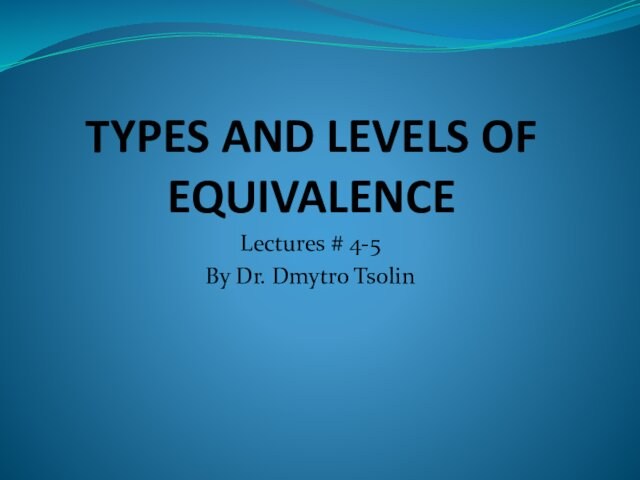
Dmytro Tsolin
Слайд 2
What is equivalence in translation?
Equivalence in translation is
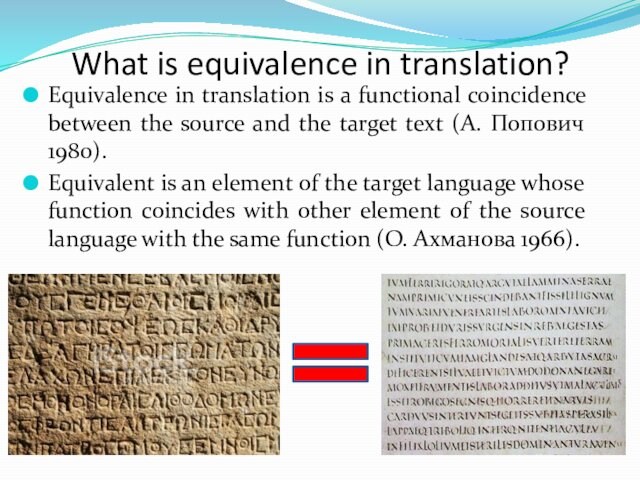
a functional coincidence between the source and the target
text (А. Попович 1980).
Equivalent is an element of the target
language whose function coincides with other element of the source language with the same function (О. Ахманова 1966).
Слайд 3
Equivalence and Adequacy
Many scholars use these terms as
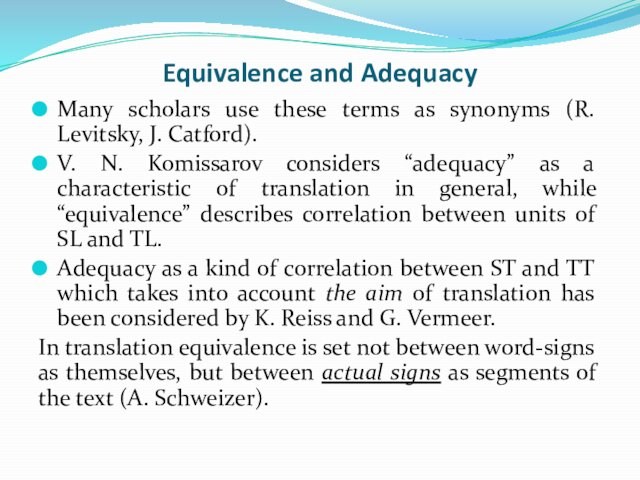
synonyms (R. Levitsky, J. Catford).
V. N. Komissarov considers “adequacy”
as a characteristic of translation in general, while “equivalence” describes
correlation between units of SL and TL.
Adequacy as a kind of correlation between ST and TT which takes into account the aim of translation has been considered by K. Reiss and G. Vermeer.
In translation equivalence is set not between word-signs as themselves, but between actual signs as segments of the text (A. Schweizer).
Слайд 4
Correlation between equivalence and adequacy according to A.
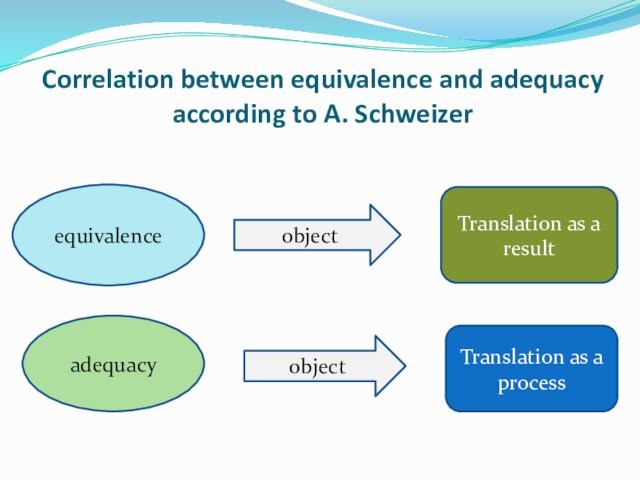
Schweizer
equivalence
adequacy
object
object
Translation as a result
Translation as a process
Слайд 5
Equivalence implies an adequate rendering of SL-codes by
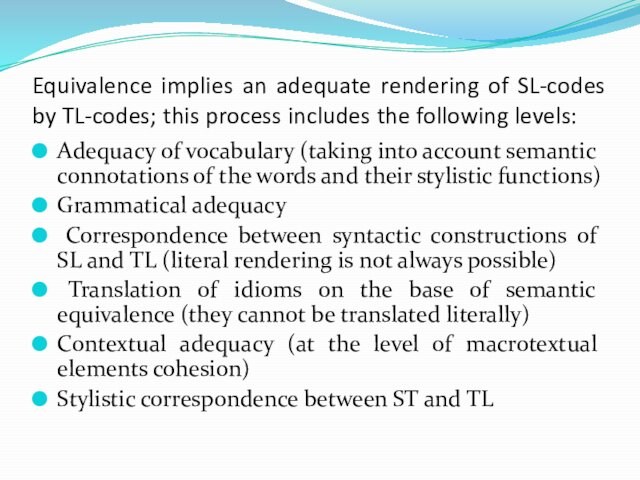
TL-codes; this process includes the following levels:
Adequacy of vocabulary
(taking into account semantic connotations of the words and their
stylistic functions)
Grammatical adequacy
Correspondence between syntactic constructions of SL and TL (literal rendering is not always possible)
Translation of idioms on the base of semantic equivalence (they cannot be translated literally)
Contextual adequacy (at the level of macrotextual elements cohesion)
Stylistic correspondence between ST and TL
Слайд 6
Equivalence of the text is more important than
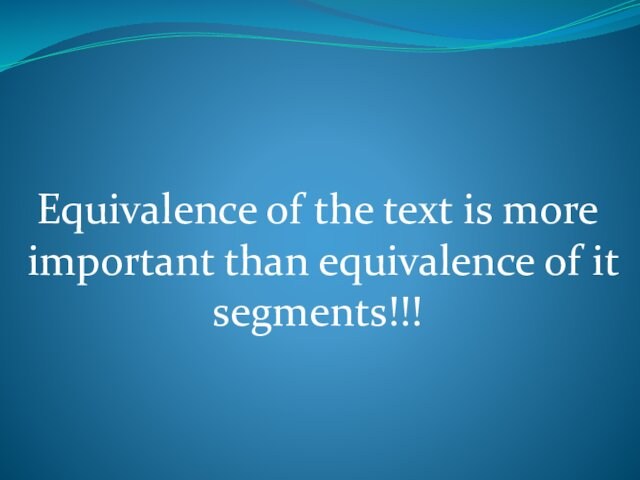
equivalence of it segments!!!
Слайд 7
Adequacy of vocabulary
βλέπομεν γὰρ ἄρτι δι᾽ ἐσόπτρου ἐν
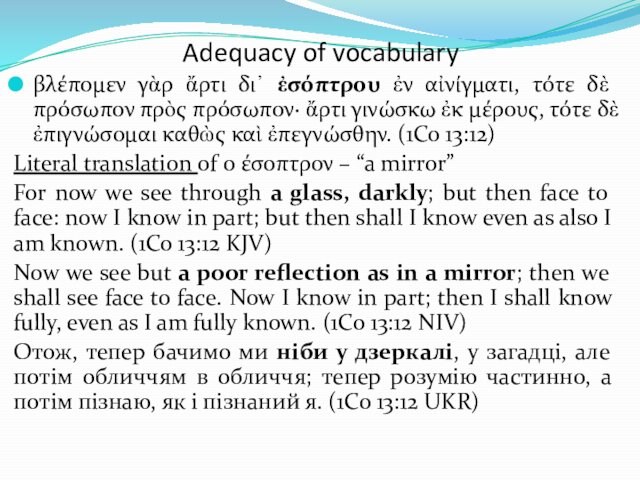
αἰνίγματι, τότε δὲ πρόσωπον πρὸς πρόσωπον· ἄρτι γινώσκω ἐκ
μέρους, τότε δὲ ἐπιγνώσομαι καθὼς καὶ ἐπεγνώσθην. (1Co 13:12)
Literal translation of
ο έσοπτρον – “a mirror”
For now we see through a glass, darkly; but then face to face: now I know in part; but then shall I know even as also I am known. (1Co 13:12 KJV)
Now we see but a poor reflection as in a mirror; then we shall see face to face. Now I know in part; then I shall know fully, even as I am fully known. (1Co 13:12 NIV)
Отож, тепер бачимо ми ніби у дзеркалі, у загадці, але потім обличчям в обличчя; тепер розумію частинно, а потім пізнаю, як і пізнаний я. (1Co 13:12 UKR)
Слайд 9
וּפָגְשׁוּ צִיִּים אֶת־אִיִּים וְשָׂעִיר עַל־רֵעֵהוּ יִקְרָא אַךְ־שָׁם הִרְגִּיעָה

לִּילִית וּמָצְאָה לָהּ מָנוֹחַ׃
[ūṕāḡšū́ ṣiyyī́m ʔeṯ-ʔiyyī́m wəśāʕī́r ʕal-rēʕēhū́ yiqrā́ʔ
ʔaḵ-šā́m hirgīʕā́ līlīṯ ūmāṣəʔā́ lāh mānṓaḥ]
The wild beasts of the
desert shall also meet with the wild beasts of the island, and the satyr shall cry to his fellow; the screech owl also shall rest there, and find for herself a place of rest. (Isa 34:14 KJV)
And the desert creatures shall meet with the wolves, the hairy goat also shall cry to its kind; Yes, the night monster shall settle there And shall find herself a resting place. (Isa 34:14 NAS)
І будуть стрічатися там дикі звірі пустинні з гієнами, а польовик буде кликати друга свого; Ліліт тільки там заспокоїться і знайде собі відпочинок! (Isa 34:14 UKR)
Слайд 10
Special terms from the ancient Mesopotamian mythology:
ṣiyyī́m –
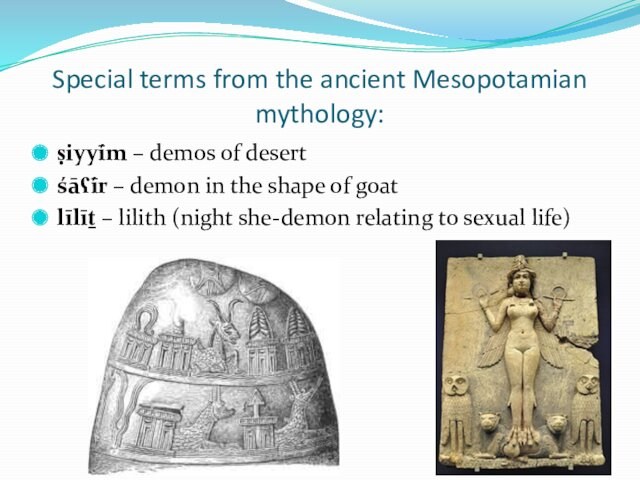
demos of desert
śāʕī́r – demon in the shape of
goat
līlīṯ – lilith (night she-demon relating to sexual life)
Слайд 11
What to do, if TL does not have
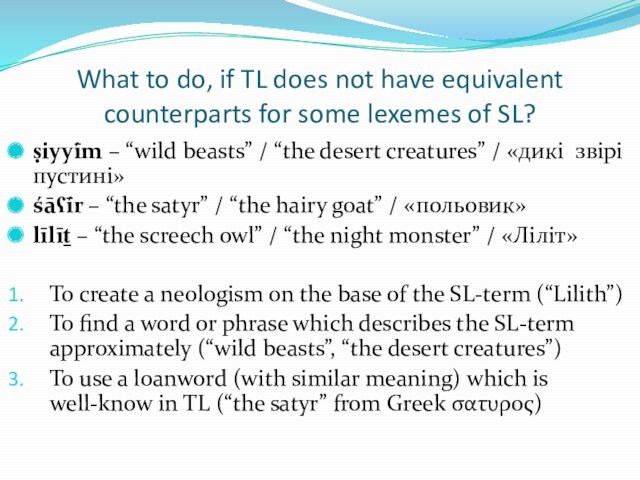
equivalent counterparts for some lexemes of SL?
ṣiyyī́m –
“wild beasts” / “the desert creatures” / «дикі звірі пустині»
śāʕī́r
– “the satyr” / “the hairy goat” / «польовик»
līlīṯ – “the screech owl” / “the night monster” / «Ліліт»
To create a neologism on the base of the SL-term (“Lilith”)
To find a word or phrase which describes the SL-term approximately (“wild beasts”, “the desert creatures”)
To use a loanword (with similar meaning) which is well-know in TL (“the satyr” from Greek σατυρος)
Слайд 12
Grammatical and syntactic equivalence
How to translate correctly the
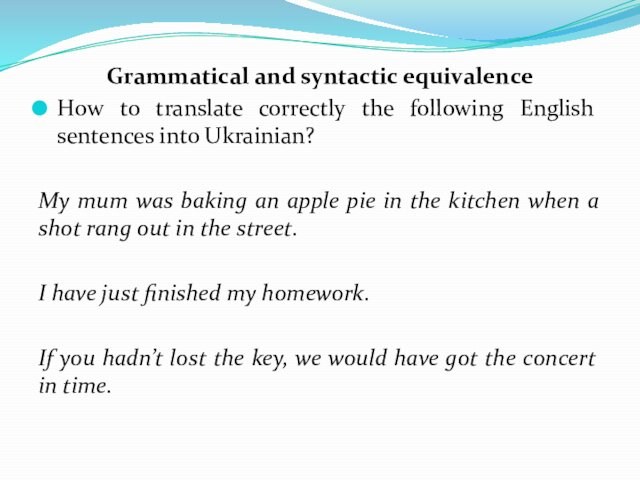
following English sentences into Ukrainian?
My mum was baking an
apple pie in the kitchen when a shot rang out
in the street.
I have just finished my homework.
If you hadn’t lost the key, we would have got the concert in time.
Слайд 13
The problem is that in Ukrainian are not
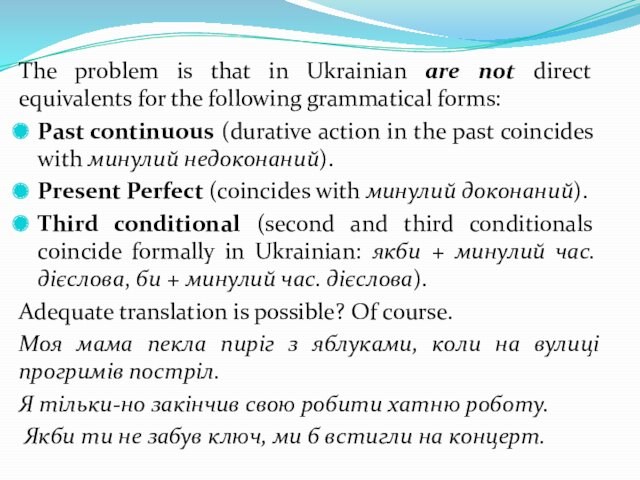
direct equivalents for the following grammatical forms:
Past continuous (durative
action in the past coincides with минулий недоконаний).
Present Perfect (coincides
with минулий доконаний).
Third conditional (second and third conditionals coincide formally in Ukrainian: якби + минулий час. дієслова, би + минулий час. дієслова).
Adequate translation is possible? Of course.
Моя мама пекла пиріг з яблуками, коли на вулиці прогримів постріл.
Я тільки-но закінчив свою робити хатню роботу.
Якби ти не забув ключ, ми б встигли на концерт.
Слайд 14
In the first case the durative aspect is
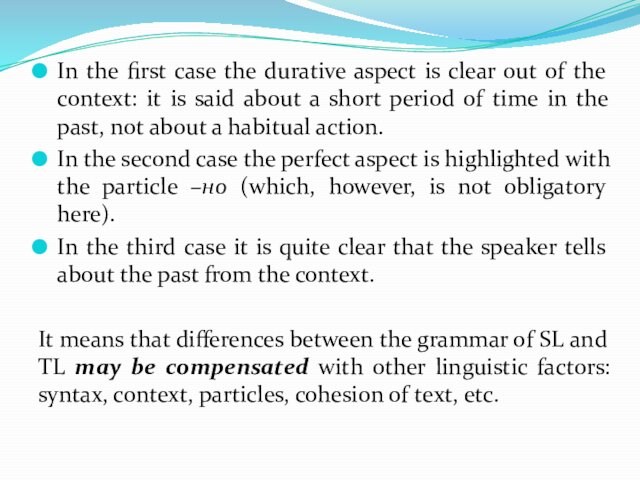
clear out of the context: it is said about
a short period of time in the past, not about
a habitual action.
In the second case the perfect aspect is highlighted with the particle –но (which, however, is not obligatory here).
In the third case it is quite clear that the speaker tells about the past from the context.
It means that differences between the grammar of SL and TL may be compensated with other linguistic factors: syntax, context, particles, cohesion of text, etc.
Слайд 15
Contextual Adequacy
Only limited number of words have one
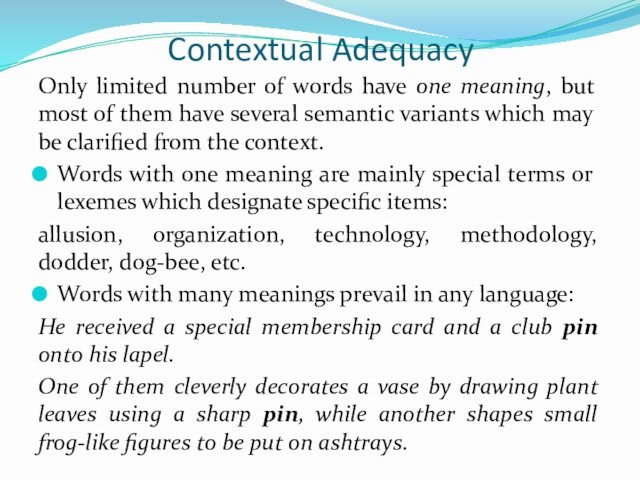
meaning, but most of them have several semantic variants
which may be clarified from the context.
Words with one
meaning are mainly special terms or lexemes which designate specific items:
allusion, organization, technology, methodology, dodder, dog-bee, etc.
Words with many meanings prevail in any language:
He received a special membership card and a club pin onto his lapel.
One of them cleverly decorates a vase by drawing plant leaves using a sharp pin, while another shapes small frog-like figures to be put on ashtrays.
Слайд 16
She was very nimble on her pins.
A bolt
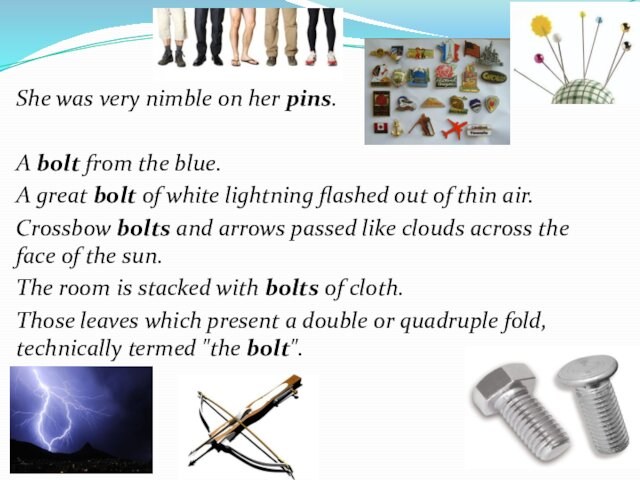
from the blue.
A great bolt of white lightning
flashed out of thin air.
Crossbow bolts and arrows passed like
clouds across the face of the sun.
The room is stacked with bolts of cloth.
Those leaves which present a double or quadruple fold, technically termed «the bolt».
Слайд 17
Translation of idioms:
The captain held his peace
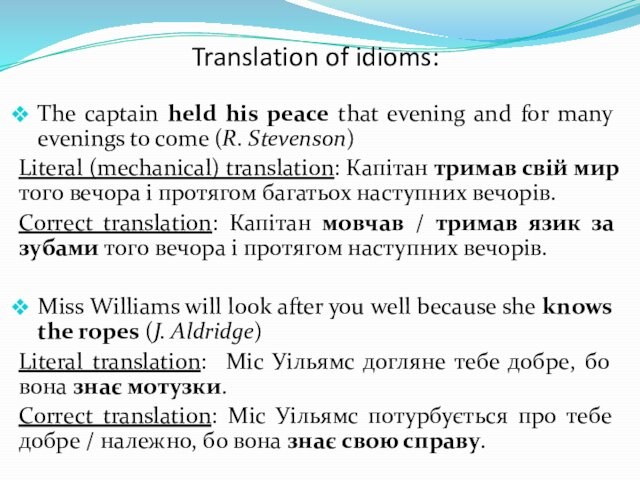
that evening and for many evenings to come (R.
Stevenson)
Literal (mechanical) translation: Капітан тримав свій мир того вечора і
протягом багатьох наступних вечорів.
Correct translation: Капітан мовчав / тримав язик за зубами того вечора і протягом наступних вечорів.
Miss Williams will look after you well because she knows the ropes (J. Aldridge)
Literal translation: Міс Уільямс догляне тебе добре, бо вона знає мотузки.
Correct translation: Міс Уільямс потурбується про тебе добре / належно, бо вона знає свою справу.
Слайд 18
Her father kissed her when she left
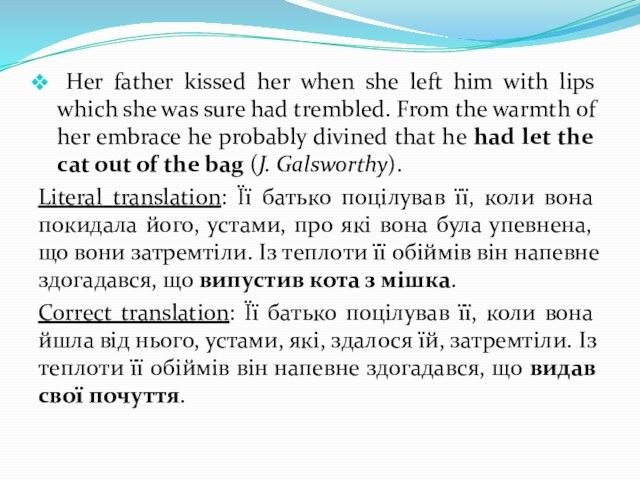
him with lips which she was sure had trembled.
From the warmth of her embrace he probably divined that
he had let the cat out of the bag (J. Galsworthy).
Literal translation: Її батько поцілував її, коли вона покидала його, устами, про які вона була упевнена, що вони затремтіли. Із теплоти її обіймів він напевне здогадався, що випустив кота з мішка.
Correct translation: Її батько поцілував її, коли вона йшла від нього, устами, які, здалося їй, затремтіли. Із теплоти її обіймів він напевне здогадався, що видав свої почуття.
Слайд 19
Examples from Greek and Hebrew
τῶν ἄλλων νομοθετῶν
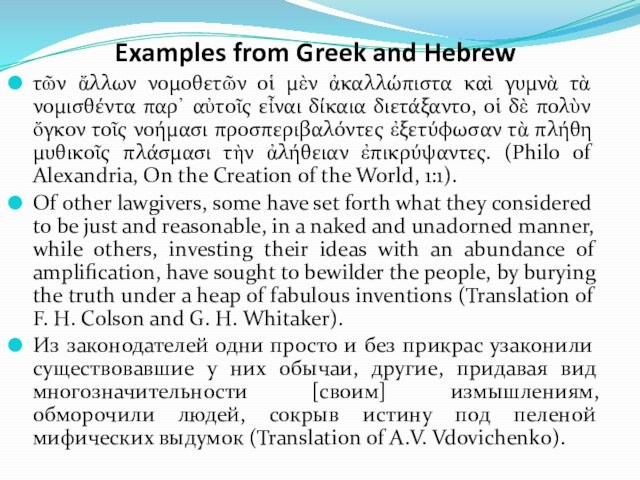
οἱ μὲν ἀκαλλώπιστα καὶ γυμνὰ τὰ νομισθέντα παρ᾽ αὐτοῖς
εἶναι δίκαια διετάξαντο, οἱ δὲ πολὺν ὄγκον τοῖς νοήμασι προσπεριβαλόντες
ἐξετύφωσαν τὰ πλήθη μυθικοῖς πλάσμασι τὴν ἀλήθειαν ἐπικρύψαντες. (Philo of Alexandria, On the Creation of the World, 1:1).
Of other lawgivers, some have set forth what they considered to be just and reasonable, in a naked and unadorned manner, while others, investing their ideas with an abundance of amplification, have sought to bewilder the people, by burying the truth under a heap of fabulous inventions (Translation of F. H. Colson and G. H. Whitaker).
Из законодателей одни просто и без прикрас узаконили существовавшие у них обычаи, другие, придавая вид многозначительности [своим] измышлениям, обморочили людей, сокрыв истину под пеленой мифических выдумок (Translation of A.V. Vdovichenko).
Слайд 20
What has the English translator changed in the
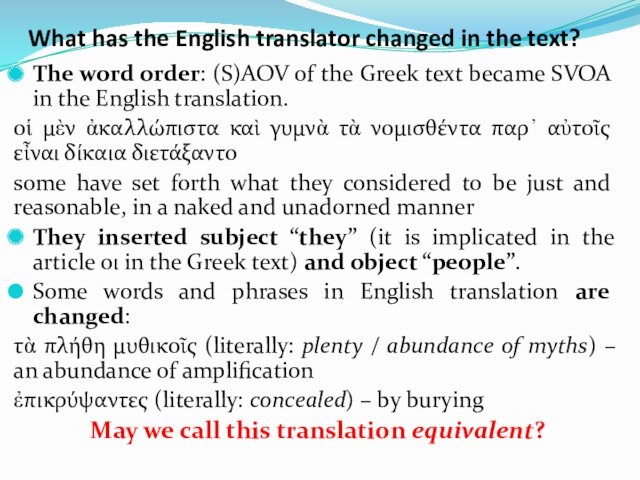
text?
The word order: (S)AOV of the Greek text became
SVOA in the English translation.
οἱ μὲν ἀκαλλώπιστα καὶ γυμνὰ τὰ
νομισθέντα παρ᾽ αὐτοῖς εἶναι δίκαια διετάξαντο
some have set forth what they considered to be just and reasonable, in a naked and unadorned manner
They inserted subject “they” (it is implicated in the article οι in the Greek text) and object “people”.
Some words and phrases in English translation are changed:
τὰ πλήθη μυθικοῖς (literally: plenty / abundance of myths) – an abundance of amplification
ἐπικρύψαντες (literally: concealed) – by burying
May we call this translation equivalent?
Слайд 21
The literal translation into Ukrainian
Із інших законодавців деякі
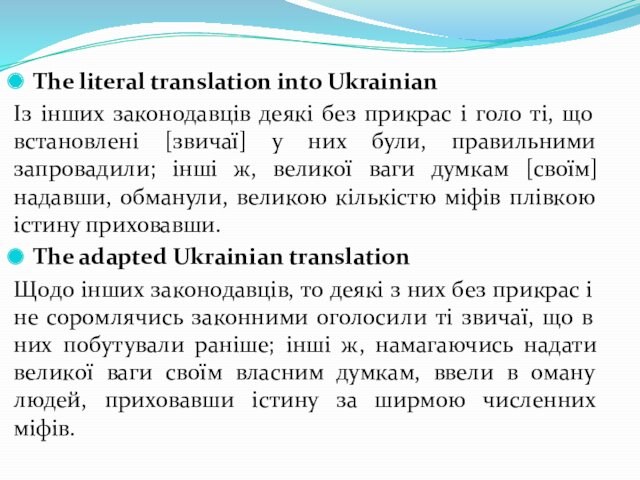
без прикрас і голо ті, що встановлені [звичаї] у
них були, правильними запровадили; інші ж, великої ваги думкам [своїм]
надавши, обманули, великою кількістю міфів плівкою істину приховавши.
The adapted Ukrainian translation
Щодо інших законодавців, то деякі з них без прикрас і не соромлячись законними оголосили ті звичаї, що в них побутували раніше; інші ж, намагаючись надати великої ваги своїм власним думкам, ввели в оману людей, приховавши істину за ширмою численних міфів.
Слайд 22
Another example: translation from Hebrew syntactic construction finite
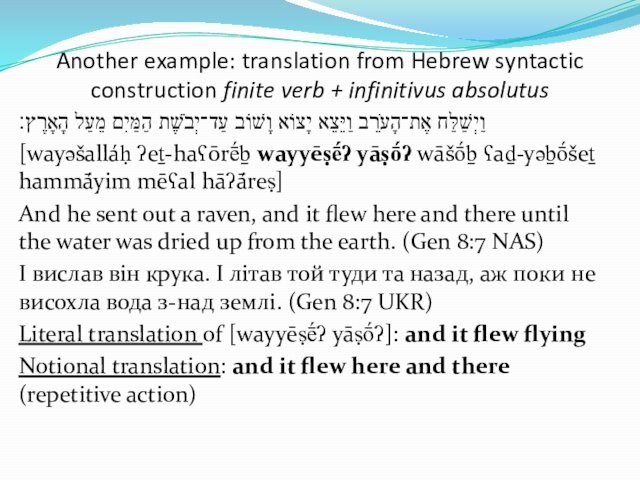
verb + infinitivus absolutus
וַיְשַׁלַּח אֶת־הָעֹרֵב וַיֵּצֵא יָצוֹא וָשׁוֹב עַד־יְבֹשֶׁת
הַמַּיִם מֵעַל הָאָרֶץ׃
[wayəšalláḥ ʔeṯ-haʕōrḗḇ wayyēṣḗʔ yāṣṓʔ wāšṓḇ ʕaḏ-yəḇṓšeṯ hammā́yim
mēʕal hāʔā́reṣ]
And he sent out a raven, and it flew here and there until the water was dried up from the earth. (Gen 8:7 NAS)
І вислав він крука. І літав той туди та назад, аж поки не висохла вода з-над землі. (Gen 8:7 UKR)
Literal translation of [wayyēṣḗʔ yāṣṓʔ]: and it flew flying
Notional translation: and it flew here and there (repetitive action)
Слайд 23
What is the main problems of equivalence in
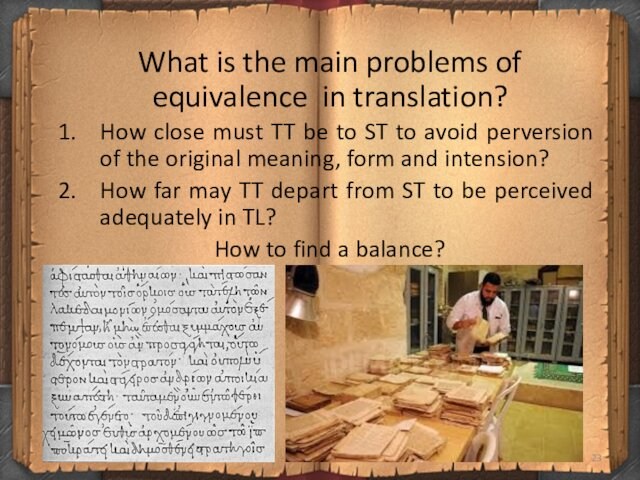
translation?
How close must TT be to ST to avoid
perversion of the original meaning, form and intension?
How far may
TT depart from ST to be perceived adequately in TL?
How to find a balance?
Слайд 24
Part 2
CONCEPTS OF EQUIVALENCE IN TRANSLATION
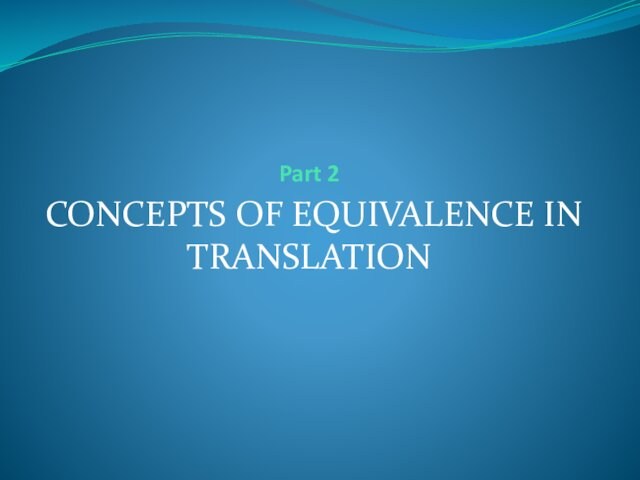
Слайд 25
Jean-Paul Vinay and
Jean Darbelnet theory
Vinay and Darbelnet
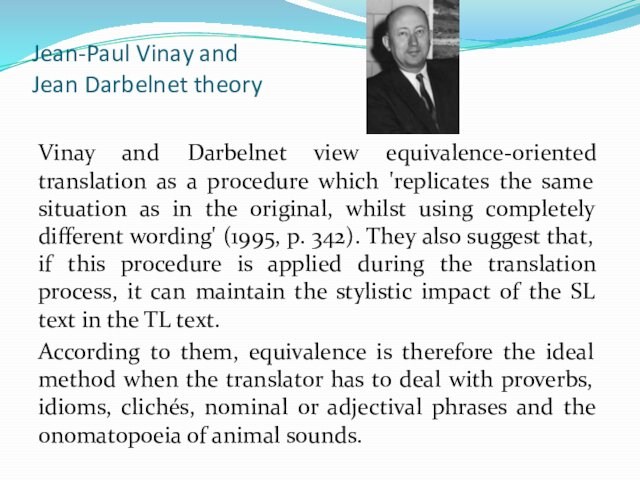
view equivalence-oriented translation as a procedure which ‘replicates the
same situation as in the original, whilst using completely different
wording’ (1995, p. 342). They also suggest that, if this procedure is applied during the translation process, it can maintain the stylistic impact of the SL text in the TL text.
According to them, equivalence is therefore the ideal method when the translator has to deal with proverbs, idioms, clichés, nominal or adjectival phrases and the onomatopoeia of animal sounds.
Слайд 26
Later they note that glossaries and collections of
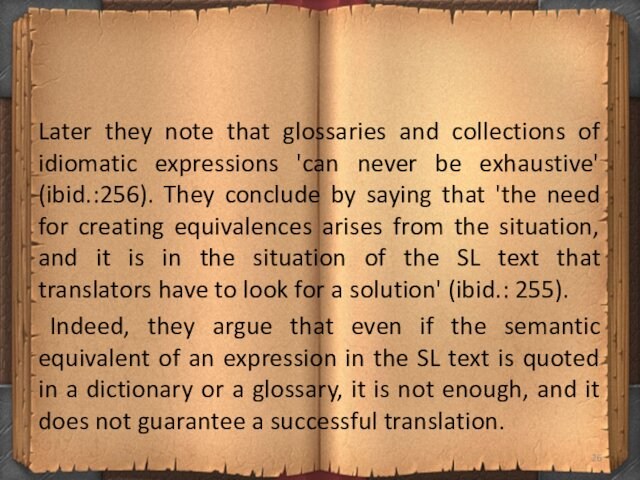
idiomatic expressions ‘can never be exhaustive’ (ibid.:256). They conclude
by saying that ‘the need for creating equivalences arises from
the situation, and it is in the situation of the SL text that translators have to look for a solution’ (ibid.: 255).
Indeed, they argue that even if the semantic equivalent of an expression in the SL text is quoted in a dictionary or a glossary, it is not enough, and it does not guarantee a successful translation.
Слайд 27
Roman Jacobson’s Theory of Equivalence
“These three kinds
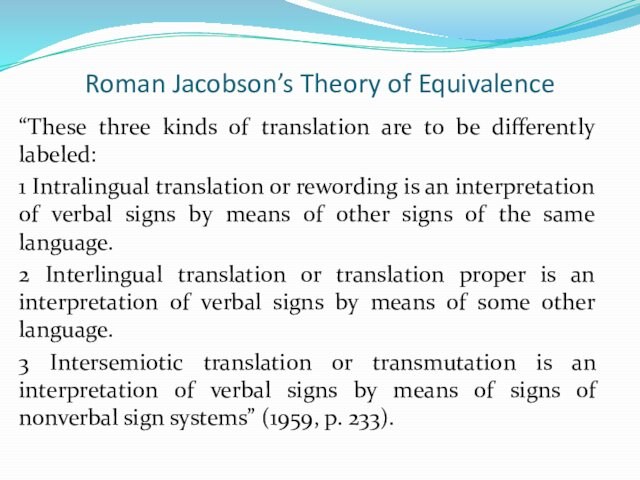
of translation are to be differently labeled:
1 Intralingual translation
or rewording is an interpretation of verbal signs by means
of other signs of the same language.
2 Interlingual translation or translation proper is an interpretation of verbal signs by means of some other language.
3 Intersemiotic translation or transmutation is an interpretation of verbal signs by means of signs of nonverbal sign systems” (1959, p. 233).
Слайд 28
“Most frequently, however, translation from one language into
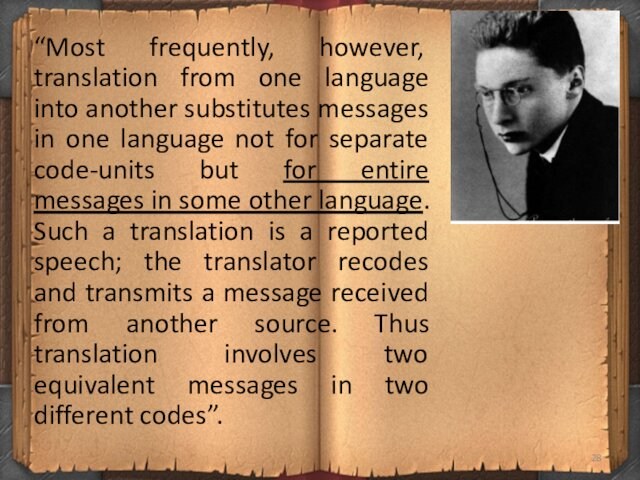
another substitutes messages in one language not for separate
code-units but for entire messages in some other language. Such
a translation is a reported speech; the translator recodes and transmits a message received from another source. Thus translation involves two equivalent messages in two different codes”.
Слайд 29
Eugene Nida’s Theory of Translation
Nida argued that there
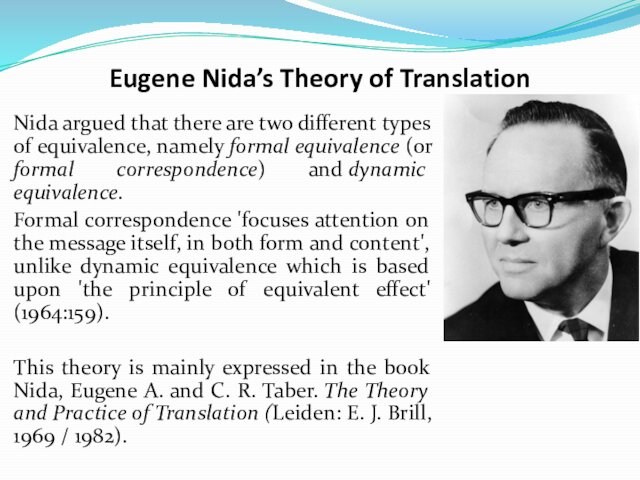
are two different types of equivalence, namely formal equivalence (or
formal correspondence) and dynamic equivalence.
Formal correspondence ‘focuses attention on the message
itself, in both form and content’, unlike dynamic equivalence which is based upon ‘the principle of equivalent effect’ (1964:159).
This theory is mainly expressed in the book Nida, Eugene A. and C. R. Taber. The Theory and Practice of Translation (Leiden: E. J. Brill, 1969 / 1982).
Слайд 30
Formal correspondence consists of a TL item which
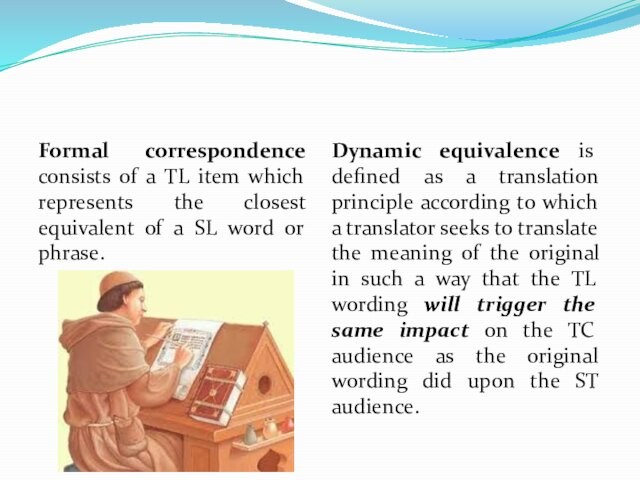
represents the closest equivalent of a SL word or
phrase.
Dynamic equivalence is defined as a translation principle according to
which a translator seeks to translate the meaning of the original in such a way that the TL wording will trigger the same impact on the TC audience as the original wording did upon the ST audience.
Слайд 31
The advantage of the Nida-Taber’s concept is in
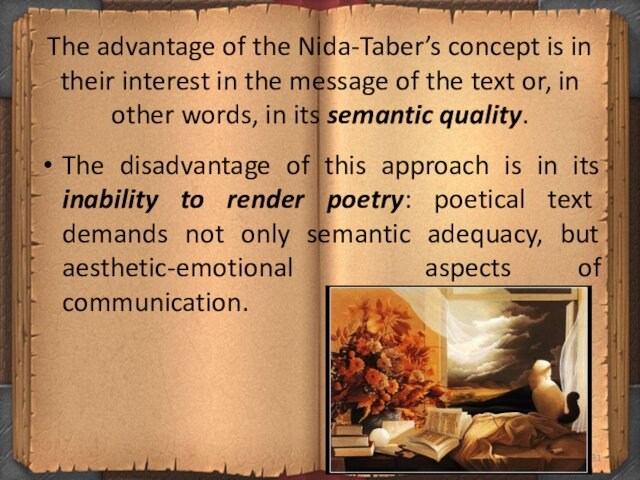
their interest in the message of the text or,
in other words, in its semantic quality.
The disadvantage of
this approach is in its inability to render poetry: poetical text demands not only semantic adequacy, but aesthetic-emotional aspects of communication.
Слайд 32
“It is hard, however, to empirically test whether
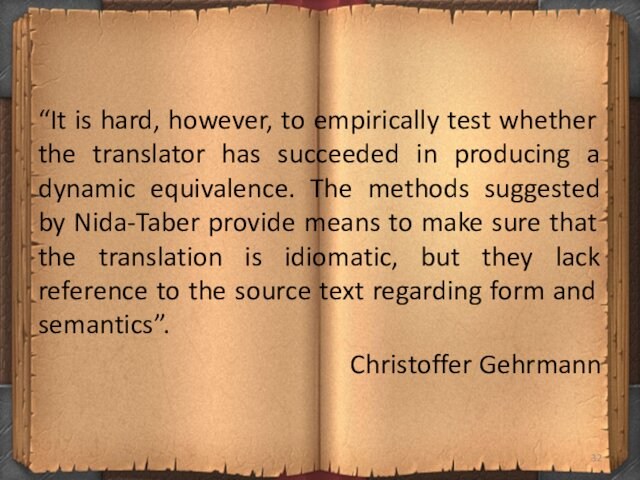
the translator has succeeded in producing a dynamic equivalence.
The methods suggested by Nida-Taber provide means to make sure
that the translation is idiomatic, but they lack reference to the source text regarding form and semantics”.
Christoffer Gehrmann
Слайд 33
John Catford’s theory
John Catford had a preference for
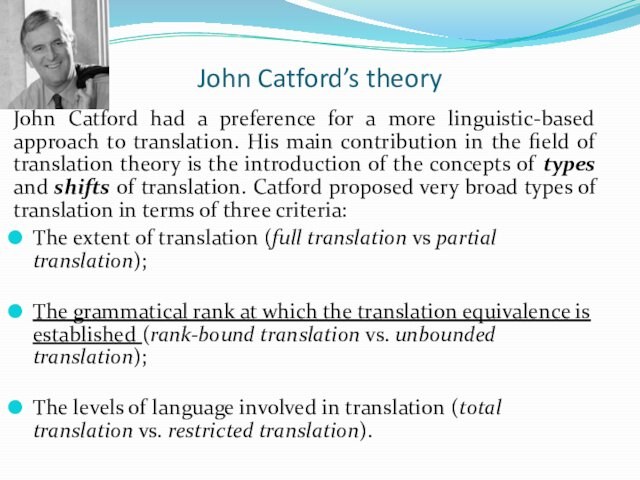
a more linguistic-based approach to translation. His main contribution
in the field of translation theory is the introduction of
the concepts of types and shifts of translation. Catford proposed very broad types of translation in terms of three criteria:
The extent of translation (full translation vs partial translation);
The grammatical rank at which the translation equivalence is established (rank-bound translation vs. unbounded translation);
The levels of language involved in translation (total translation vs. restricted translation).
Слайд 34
Only the second type of translation concerns the
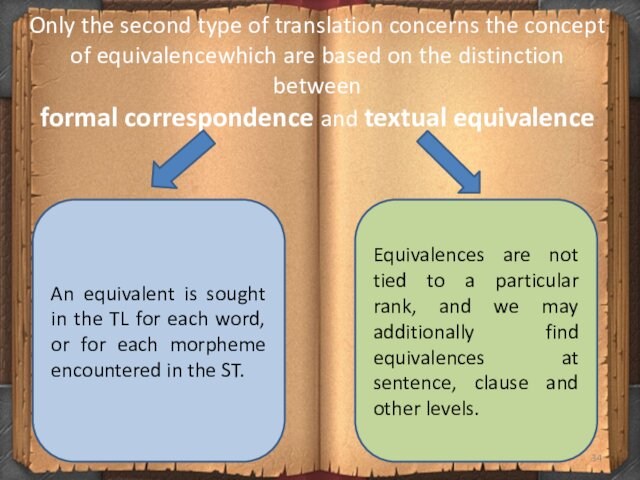
concept of equivalencewhich are based on the distinction between
formal correspondence and textual equivalence
An equivalent is sought in the
TL for each word, or for each morpheme encountered in the ST.
Equivalences are not tied to a particular rank, and we may additionally find equivalences at sentence, clause and other levels.
Слайд 35
However, in the process of rendering from SL
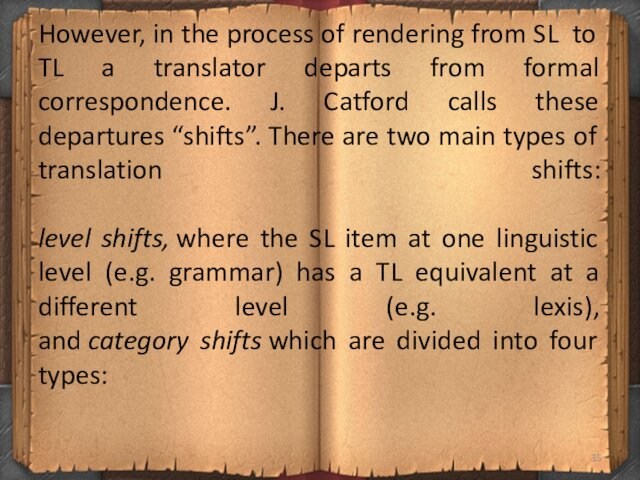
to TL a translator departs from formal correspondence. J.
Catford calls these departures “shifts”. There are two main types
of translation shifts:
level shifts, where the SL item at one linguistic level (e.g. grammar) has a TL equivalent at a different level (e.g. lexis),
and category shifts which are divided into four types:
Слайд 36
Structure-shifts, which involve a grammatical change between the structure
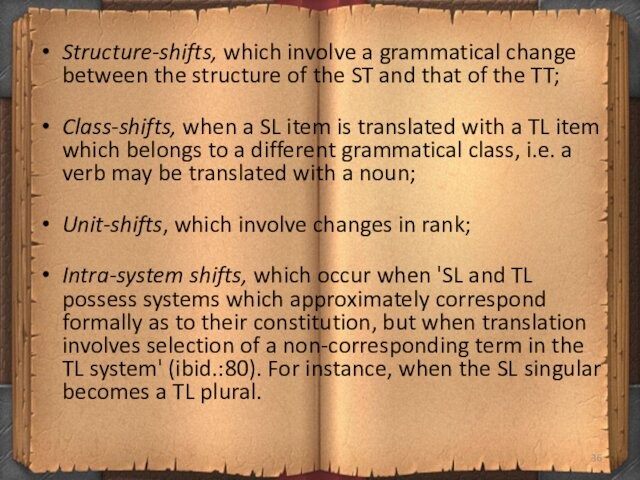
of the ST and that of the TT;
Class-shifts, when a
SL item is translated with a TL item which belongs
to a different grammatical class, i.e. a verb may be translated with a noun;
Unit-shifts, which involve changes in rank;
Intra-system shifts, which occur when ‘SL and TL possess systems which approximately correspond formally as to their constitution, but when translation involves selection of a non-corresponding term in the TL system’ (ibid.:80). For instance, when the SL singular becomes a TL plural.
Слайд 37
Catford was criticized very much for his linguistic
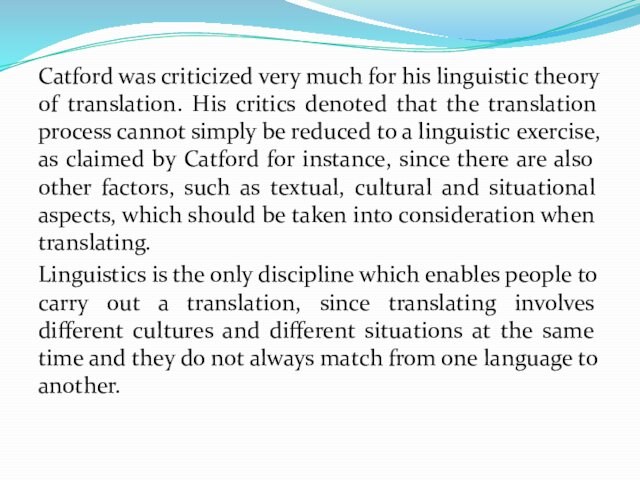
theory of translation. His critics denoted that the translation
process cannot simply be reduced to a linguistic exercise, as
claimed by Catford for instance, since there are also other factors, such as textual, cultural and situational aspects, which should be taken into consideration when translating.
Linguistics is the only discipline which enables people to carry out a translation, since translating involves different cultures and different situations at the same time and they do not always match from one language to another.
Слайд 38
Juliane Hause’s concept of
equivalance
Juliane House (1977) is
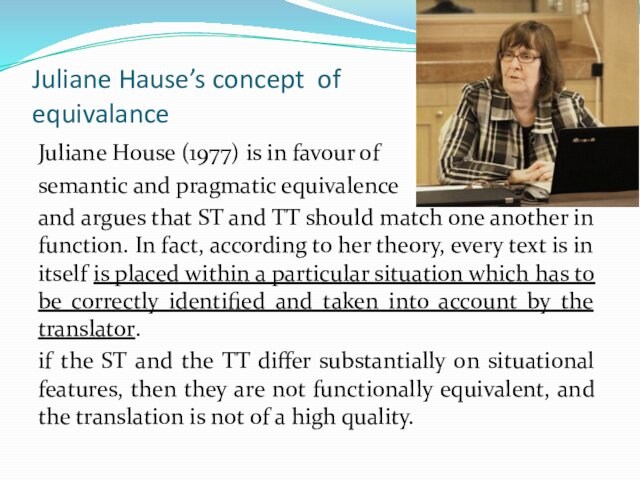
in favour of
semantic and pragmatic equivalence
and argues
that ST and TT should match one another in function.
In fact, according to her theory, every text is in itself is placed within a particular situation which has to be correctly identified and taken into account by the translator.
if the ST and the TT differ substantially on situational features, then they are not functionally equivalent, and the translation is not of a high quality.
Слайд 39
Central to House’s discussion is the concept of overt and covert translations.
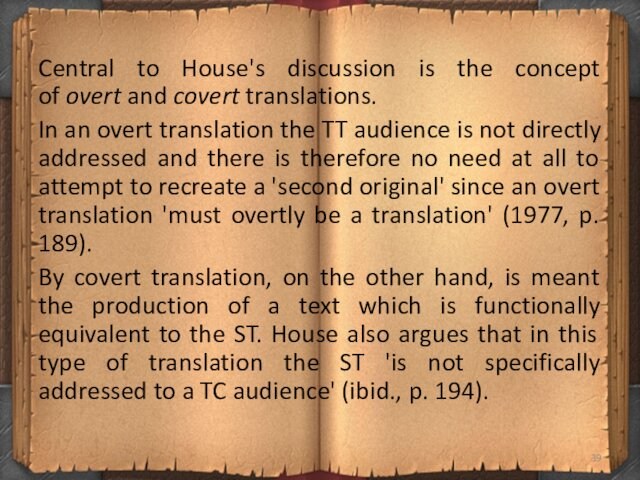
In an overt translation the TT audience is not
directly addressed and there is therefore no need at all
to attempt to recreate a ‘second original’ since an overt translation ‘must overtly be a translation’ (1977, p. 189).
By covert translation, on the other hand, is meant the production of a text which is functionally equivalent to the ST. House also argues that in this type of translation the ST ‘is not specifically addressed to a TC audience’ (ibid., p. 194).
Слайд 40
Mona Baker: different types of
equivalence
Equivalence that can
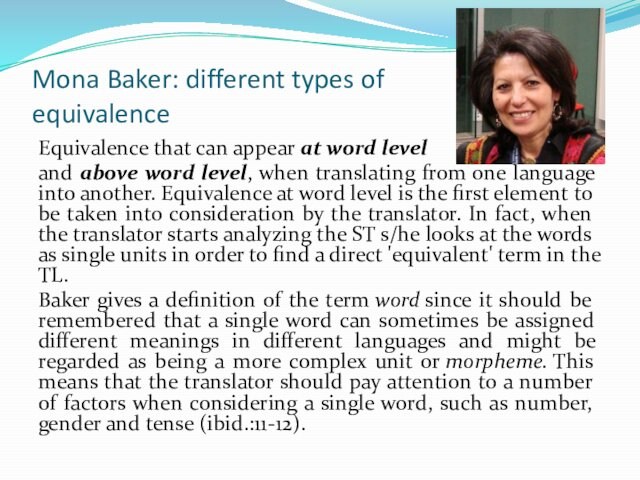
appear at word level
and above word level, when
translating from one language into another. Equivalence at word level
is the first element to be taken into consideration by the translator. In fact, when the translator starts analyzing the ST s/he looks at the words as single units in order to find a direct ‘equivalent’ term in the TL.
Baker gives a definition of the term word since it should be remembered that a single word can sometimes be assigned different meanings in different languages and might be regarded as being a more complex unit or morpheme. This means that the translator should pay attention to a number of factors when considering a single word, such as number, gender and tense (ibid.:11-12).
Слайд 41
Grammatical equivalence. She notes that grammatical rules may
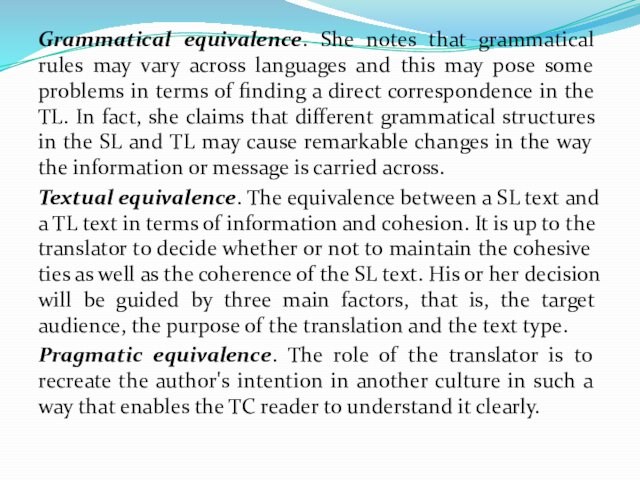
vary across languages and this may pose some problems
in terms of finding a direct correspondence in the TL.
In fact, she claims that different grammatical structures in the SL and TL may cause remarkable changes in the way the information or message is carried across.
Textual equivalence. The equivalence between a SL text and a TL text in terms of information and cohesion. It is up to the translator to decide whether or not to maintain the cohesive ties as well as the coherence of the SL text. His or her decision will be guided by three main factors, that is, the target audience, the purpose of the translation and the text type.
Pragmatic equivalence. The role of the translator is to recreate the author’s intention in another culture in such a way that enables the TC reader to understand it clearly.
Слайд 42
Five types of equivalence in accordance with
Verner
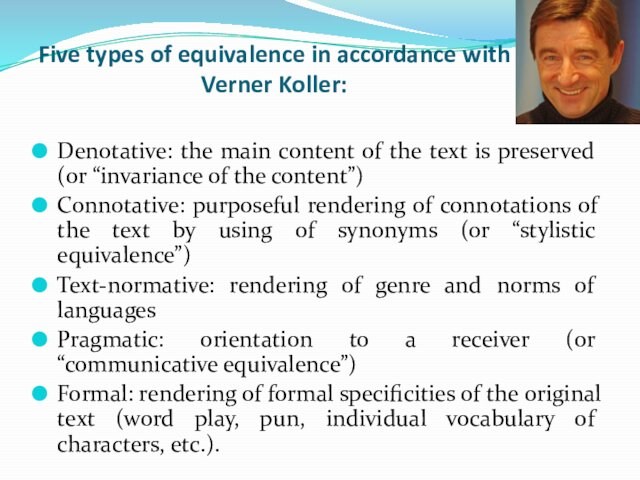
Koller:
Denotative: the main content of the text is
preserved (or “invariance of the content”)
Connotative: purposeful rendering of connotations
of the text by using of synonyms (or “stylistic equivalence”)
Text-normative: rendering of genre and norms of languages
Pragmatic: orientation to a receiver (or “communicative equivalence”)
Formal: rendering of formal specificities of the original text (word play, pun, individual vocabulary of characters, etc.).
Слайд 43
Types (levels) of equivalence according to V.N. Komissarov
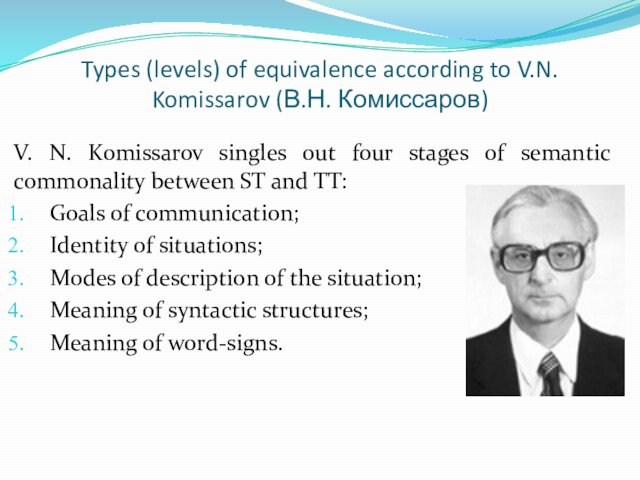
(В.Н. Комиссаров)
V. N. Komissarov singles out four stages of
semantic commonality between ST and TT:
Goals of communication;
Identity of situations;
Modes
of description of the situation;
Meaning of syntactic structures;
Meaning of word-signs.
Слайд 44
Goals of communication: at this level semantic commonalities
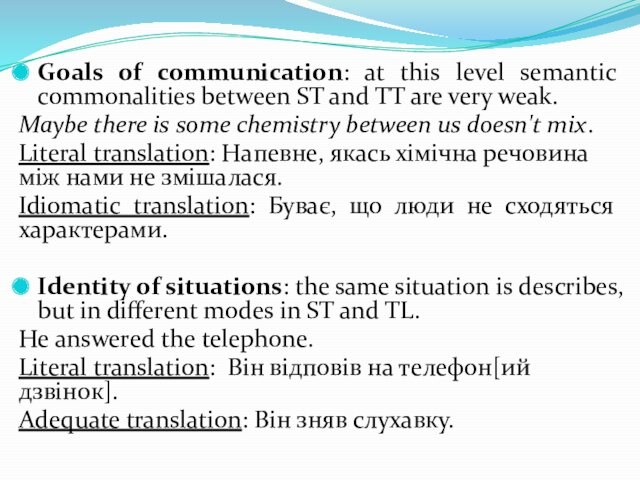
between ST and TT are very weak.
Maybe there
is some chemistry between us doesn’t mix.
Literal translation: Напевне, якась
хімічна речовина між нами не змішалася.
Idiomatic translation: Буває, що люди не сходяться характерами.
Identity of situations: the same situation is describes, but in different modes in ST and TL.
Не answered the telephone.
Literal translation: Він відповів на телефон[ий дзвінок].
Adequate translation: Він зняв слухавку.
Слайд 45
Modes of description of the situation: only general
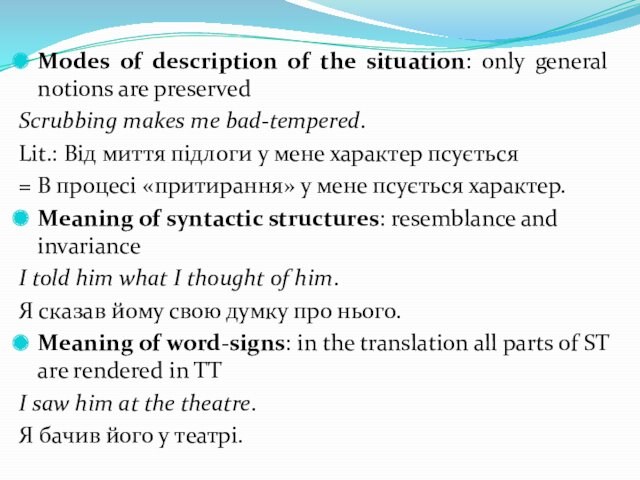
notions are preserved
Scrubbing makes me bad-tempered.
Lit.: Від миття
підлоги у мене характер псується
= В процесі «притирання» у
мене псується характер.
Meaning of syntactic structures: resemblance and invariance
I told him what I thought of him.
Я сказав йому свою думку про нього.
Meaning of word-signs: in the translation all parts of ST are rendered in TT
I saw him at the theatre.
Я бачив його у театрі.
Слайд 46
There are two extremes in translation: literalness and
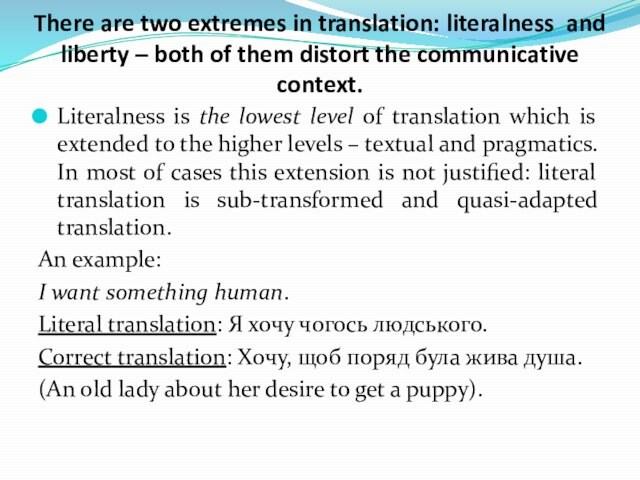
liberty – both of them distort the communicative context.
Literalness
is the lowest level of translation which is extended to
the higher levels – textual and pragmatics. In most of cases this extension is not justified: literal translation is sub-transformed and quasi-adapted translation.
An example:
I want something human.
Literal translation: Я хочу чогось людського.
Correct translation: Хочу, щоб поряд була жива душа.
(An old lady about her desire to get a puppy).
Слайд 47
Different Types of Equivalence
Literal equivalence – the case
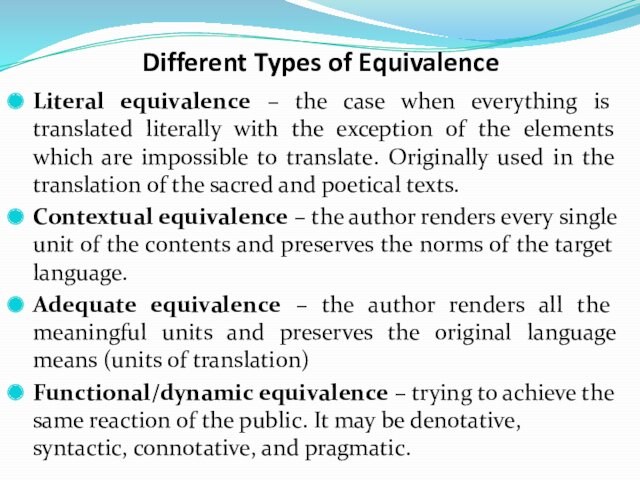
when everything is translated literally with the exception of
the elements which are impossible to translate. Originally used in
the translation of the sacred and poetical texts.
Contextual equivalence – the author renders every single unit of the contents and preserves the norms of the target language.
Adequate equivalence – the author renders all the meaningful units and preserves the original language means (units of translation)
Functional/dynamic equivalence – trying to achieve the same reaction of the public. It may be denotative, syntactic, connotative, and pragmatic.
Слайд 48
Literal equivalence
This type of equivalence may be
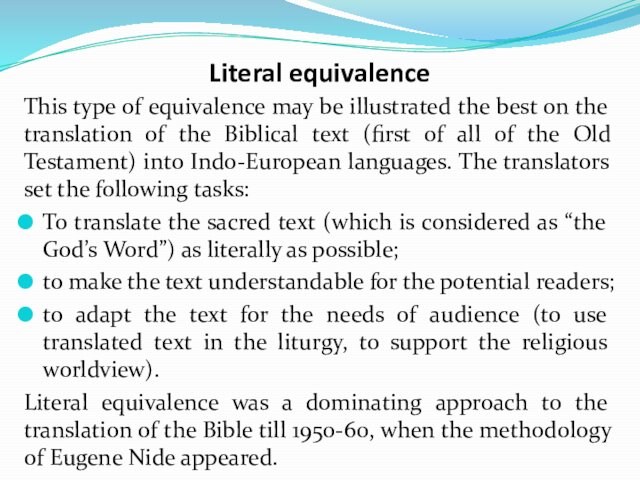
illustrated the best on the translation of the Biblical
text (first of all of the Old Testament) into Indo-European
languages. The translators set the following tasks:
To translate the sacred text (which is considered as “the God’s Word”) as literally as possible;
to make the text understandable for the potential readers;
to adapt the text for the needs of audience (to use translated text in the liturgy, to support the religious worldview).
Literal equivalence was a dominating approach to the translation of the Bible till 1950-60, when the methodology of Eugene Nide appeared.
Слайд 49
It was a challenging task for the ancient
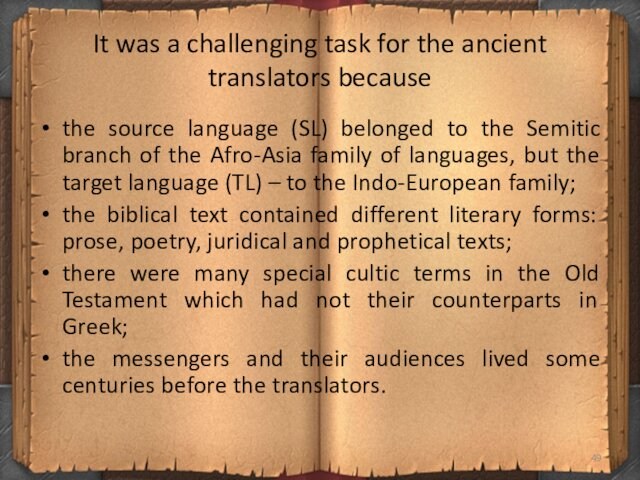
translators because
the source language (SL) belonged to the Semitic
branch of the Afro-Asia family of languages, but the target
language (TL) – to the Indo-European family;
the biblical text contained different literary forms: prose, poetry, juridical and prophetical texts;
there were many special cultic terms in the Old Testament which had not their counterparts in Greek;
the messengers and their audiences lived some centuries before the translators.
Слайд 50
The problems of grammar and syntax which had
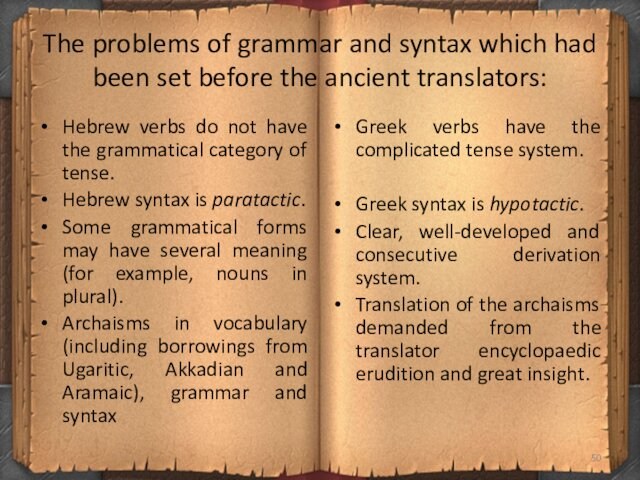
been set before the ancient translators:
Hebrew verbs do not
have the grammatical category of tense.
Hebrew syntax is paratactic.
Some grammatical
forms may have several meaning (for example, nouns in plural).
Archaisms in vocabulary (including borrowings from Ugaritic, Akkadian and Aramaic), grammar and syntax
Greek verbs have the complicated tense system.
Greek syntax is hypotactic.
Clear, well-developed and consecutive derivation system.
Translation of the archaisms demanded from the translator encyclopaedic erudition and great insight.
Слайд 51
The ancient translator tried to be careful in

the translation:
They rendered each Hebrew lexeme with a corresponding
Greek word consequently (אלהים = ο θεος [the God], יהוה
= ο κυριος [the Lord], ברא = ποιεω [to create], יצר = πλασσω [to form], משכן = σκηνη [the tabernacle]);
They attempted to imitate the Hebrew syntax where it was possible (the paratactic syntax, the word order VSO, the syntactic parallelism in poetry);
They created new words (neologisms) in the cases when they couldn’t find a Greek equivalent for a Hebrew word (for example, the cultic term ιλαστεριον for כפרת [an atonement cover]);
They used the hypotactic syntactic construction for the infinitive construction in Hebrew and asyndetic relative clauses.
Слайд 52
Two approaches to the equivalence in translation: literal
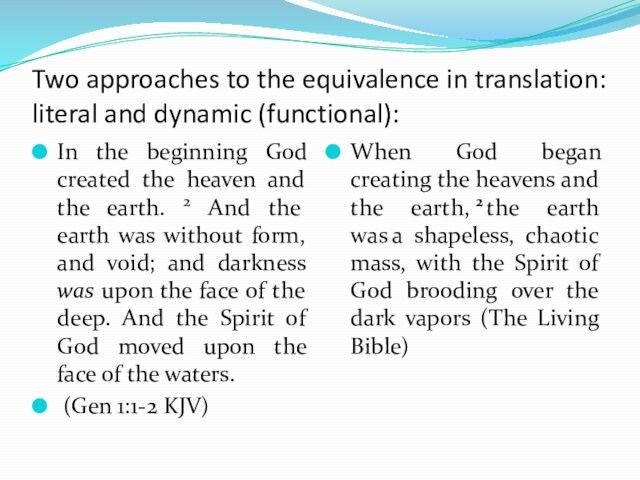
and dynamic (functional):
In the beginning God created the heaven
and the earth. 2 And the earth was without form,
and void; and darkness was upon the face of the deep. And the Spirit of God moved upon the face of the waters.
(Gen 1:1-2 KJV)
When God began creating the heavens and the earth, 2 the earth was a shapeless, chaotic mass, with the Spirit of God brooding over the dark vapors (The Living Bible)
Слайд 53
Literal and functional approaches in translation of poetry:
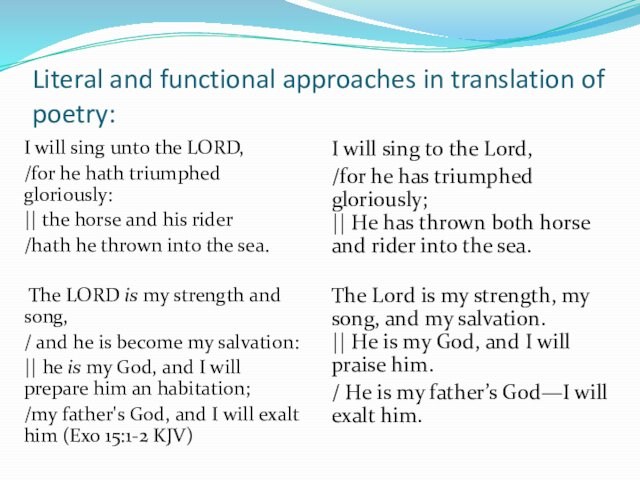
I will sing unto the LORD,
/for he hath
triumphed gloriously:
|| the horse and his rider
/hath he
thrown into the sea.
The LORD is my strength and song,
/ and he is become my salvation:
|| he is my God, and I will prepare him an habitation;
/my father’s God, and I will exalt him (Exo 15:1-2 KJV)
I will sing to the Lord,
/for he has triumphed gloriously;
|| He has thrown both horse and rider into the sea.
The Lord is my strength, my song, and my salvation.
|| He is my God, and I will praise him.
/ He is my father’s God—I will exalt him.
Слайд 54
Shakespeare’s sonnet 1 in Ukrainian translation
by Dmytro Pavlychko
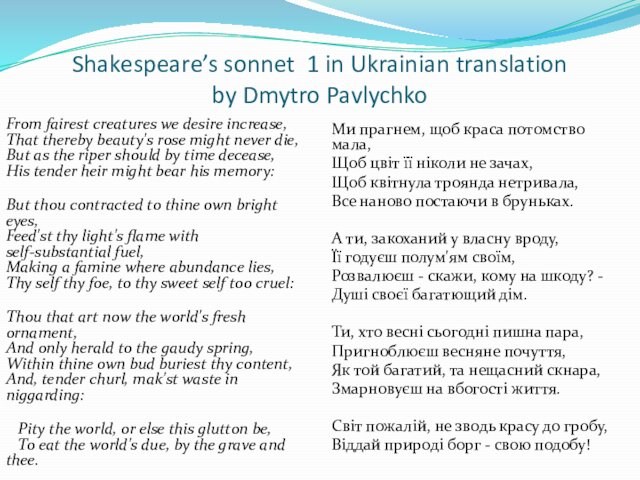
From fairest creatures we desire increase,
That thereby beauty’s rose
might never die,
But as the riper should by time decease,
His
tender heir might bear his memory:
But thou contracted to thine own bright eyes,
Feed’st thy light’s flame with self-substantial fuel,
Making a famine where abundance lies,
Thy self thy foe, to thy sweet self too cruel:
Thou that art now the world’s fresh ornament,
And only herald to the gaudy spring,
Within thine own bud buriest thy content,
And, tender churl, mak’st waste in niggarding:
Pity the world, or else this glutton be,
To eat the world’s due, by the grave and thee.
Ми прагнем, щоб краса потомство мала,
Щоб цвіт її ніколи не зачах,
Щоб квітнула троянда нетривала,
Все наново постаючи в бруньках.
А ти, закоханий у власну вроду,
Її годуєш полум’ям своїм,
Розвалюєш — скажи, кому на шкоду? —
Душі своєї багатющий дім.
Ти, хто весні сьогодні пишна пара,
Пригноблюєш весняне почуття,
Як той багатий, та нещасний скнара,
Змарновуєш на вбогості життя.
Світ пожалій, не зводь красу до гробу,
Віддай природі борг — свою подобу!
Equivalence for Translators
Video Series and Discussion
Equivalence is an important concept for translators. To be honest, the more Translation Studies I read, the more I think that scholars are just asking the same question again and again. When are two “things” equivalent in different languages.
In this short video I give an introduction to the concept.
While it’s not at all complex, equivalence is certainly worth thinking about, and understanding it can help us make the best choices for our translations.
Equivalence at the word level
The easiest type of equivalence to think about is at the word level. Following the structure used by Mona Baker in “In Other Words“, I’ve posted some videos with very random thoughts on different levels of equivalence. In this video I discuss some useful examples.
The problem is that if we match each word in a sentence perfectly, we still won’t have a good sentence, we still need to think about the grammar and other features at the sentence level.
Equivalence at the sentence level
Let’s now look a level further, and talk about equivalence for sentences. Let’s start by talking about collocations. Some words naturally go well with other words, for example, table a motion, wash a dish and so on, but those pairing don’t hold across languages.
Above the sentence level
Now let’s turn to more meta aspects. I’ve already
Conclusion
Equivalence is a key thing driving translation studies. It is also crucial for practical translation. We need to think about finding an equivalent word, then making the sentences equivalent (which is usually a grammar issue), and then thinking above the sentence level, especially information flow. We also have to think about things like phots and the layout of text as well as any symbols, or colours etc.
Check out my series on Becoming A Translator by Douglas Robinson for some more theory and random thoughts.
CHAPTER 1
INTRODUCTION
EQUIVALENCE AT WORD LEVEL
This
chapter discusses translation problems arising from lack of equivalence at word
level; what does a translation do when there is no word in the target language
which expresses the same meaning as to he source language word? But before we
look at specific types of non-equivalence and the various strategies which can
be used for dealing with them, It is important to establish what a word is,
whether or not it is the main unit of meaning in language, what kinds of
meaning it can convey, and how languages differ in the way they choose to
express certain meaning but not others.
CHAPTER II
DISCUSSION
2.1
THE WORD IN DIFFERENT LANGUAGES
2.1.1
What is a word?
The word is the smallest unit of
language that can be used by itself (bolinger
and sears,1968:43).
2.1.2
Is There A One–To-One Relationship
Between Word And Meaning?
Elements of meaning which are
represented by several orthographic words in one language, say English, may be
represented by one orthographic word in another, and vice versa. For instance,
Ø
“tennis
player” I written as one word in Turkish “tenisci”
Ø
“Cheap”
as one word in Japanese “yasukattara” but in Spanish rendered by three words: “
pasar a maquina.
2.1.3
Introducing Morphemes
Morpheme To describe the minimal formal
element of meaning in language, as distinct from word, which may or may not
contain several elements of meaning. thus, an important difference between
morpheme and words is that a morpheme cannot contain more than one element of
meaning and cannot be further analyzed.
To take an example from English,
Kind of morpheme
·
Free morpheme : (can stand alone as
word):function and content word
·
Bound morpheme: like “un” appear only
together with other morphemes to form a lexeme. Bound morphemes in general tend
to be prefixes and suffixes.
·
Derivational morpheme: can be added to a
word to create (derive) another word: from the addition of “ness “to “happy”,
for example, we get “happiness.
·
Inflectional morpheme: is affixes that
not change class of roots if it attach to the root or modify a word’s tense,
number, aspect, and so on.
Grammatical functions of morpheme:
Bags
2.
Gender, ex: stewardess
Manageress
3.
Tenses, ex: considered
4. Change the class of word,
Ex: happiness = Happy (adj) + ness (bound
morpheme) = noun
2.2 Lexical Meaning
Lexical
meaning is the basic meaning of word based on dictionary
and not yet added from other words. Example: book = booking
2.2.1
Propositional Vs Expressive Meaning
The
propositional meaning is this type
of meaning which provides the basic on which we can judge an utterance as true
or false. For instance, the propositional meaning of shirt is a piece of
clothing worn on the upper part of the body.
Expressive meaning
cannot be judged as true or false. This is because expressive meaning release
to the speaker’s feelings or attitude rather than to what words and utterances
refer to.
Two
or more words or utterances can therefore have the same propositional meaning
but differ in their expressive meanings. This is true not only of words and
utterances within the same language, where such words are often referred to as
synonyms or near-synonyms, but also for words and utterances from different
languages.
2.2.2
Presupposed Meaning
Presupposed
meaning arises from co-occurrence restrictions, that is to say, it depends on
what other words we expect to see before or after a certain lexical unit.
Restrictions
can be:
v
Selection restrictions:
these are a function of the propositional meaning of word. For example: next to
the adjective “furious “we expect a human subject, expect in the case of
figurative language.
v
Collocation restrictions:
these are semantically arbitrary restrictions which do not follow logically
from the propositional meaning of a word.
2.2.3
Evoked Meaning
Evoked
meaning arises from dialect and register variation. A dialect is a variety of language which has currency within a
specific community or group of speakers and can be :
Geographical ( restricted to a certain
area )
Temporal ( restricted to a certain
period of time )
Social ( used by different social
classes. Ex : scent/perfume )
Register
is a variety of language that a language user considers appropriate to a
specific situation. Register variation arises from variations in the following:
a)
Field
of discourse: this is an abstract term for ‘what is going on’ that is relevant
to the speaker’s choice of linguistic items.
b)
Tenor
of discourse: an abstract term for the relationships between the people taking
part in the discourse.
c)
Mode
of discourse: an abstract term for the role that the language is playing
(speech, essay, lecture, instructions) and for its medium of transmission
(spoken, written).
CHAPTER III
CONCLUSION
This chapter discusses about equivalence
at word level, where the material
is about the problems of translation on the equivalence
at word level. and equivalence at word level it self is a matter of how to
equalize the inside word on his level. And clarified that this matter has some
parts that about a word, about the morpheme, lexical meaning lexical
meaning.dan is also divided into several parts: the first of propositional vs.
expressive meaning, both on presupposed meaning and final evoked meaning.
And expected
from the subject matter, we can figure out what
it is equivalence at word level as well as
its parts so that
it facilitates us
to know what to do as a good translator.

